
25 Things To Do In Vilnius Lithuania in Winter
If you tell someone you are going to Vilnius, you are often met with a confused look and a 'Where is that'. While it may not be Rome, or Paris, it packs a punch with history, passion, resilience and fabulous food and stories. From a man who built Gediminas Castle based on a dream, to Vilnius Cathedral Crypts just discovered in 1984 of rulers here, along with the Palace of the Grand dukes, Cathedral Square. There are A LOT of incredible things to this unique Eastern European Baltic State.
I visited Lithuania in November of 2022 and continue to update this article every year to ensure you have the most accurate information to plan your epic trip. For more information on the Crypts of the Cathedral and if it's worth it, the best best places to see refuge from the windy winters, and the cultural aspects often missed - just keep on reading.
Be sure to also check out my articles on Travel Hacks in Lithuania, Visiting Kaunas, and A Brief History of Lithuania to get your bearings.
1- A UNESCO World Heritage Site
Vilnius is known for its architecture in the old town, and was named a UNESCO World Heritage site in 1994. Prior to World War II, it had one of the largest Jewish populations in Europe. The name of the city is derived from the nearby Vilnia River, and in Lithuania Vilnia means ripple.
Lithuania was ruled by Dukes, not kings, so one of the earliest Dukes - Grand Duke Gediminas (1275-1342) was out hunting, and after settling down for the night had a dream of an iron wolf on top of a hill howling a mighty howl. Back then much of the Baltic regions were quite Pagan still, so he asked his Pagan Priest (Krivis) to interpret the dream for him. In essence he said that the Duke would rule and build a great building upon a hill (where Vilnius now stands), and would rule in great glory and the echoes of his glory would be heard in all the surrounding lands....... I'm not Pagan but looks like he was right.... the man is a proper legend in these parts.
After many wars, German occupation, Soviet occupation and the like, Lithuanian heritage and history was all but suppressed and attempted to be erased.
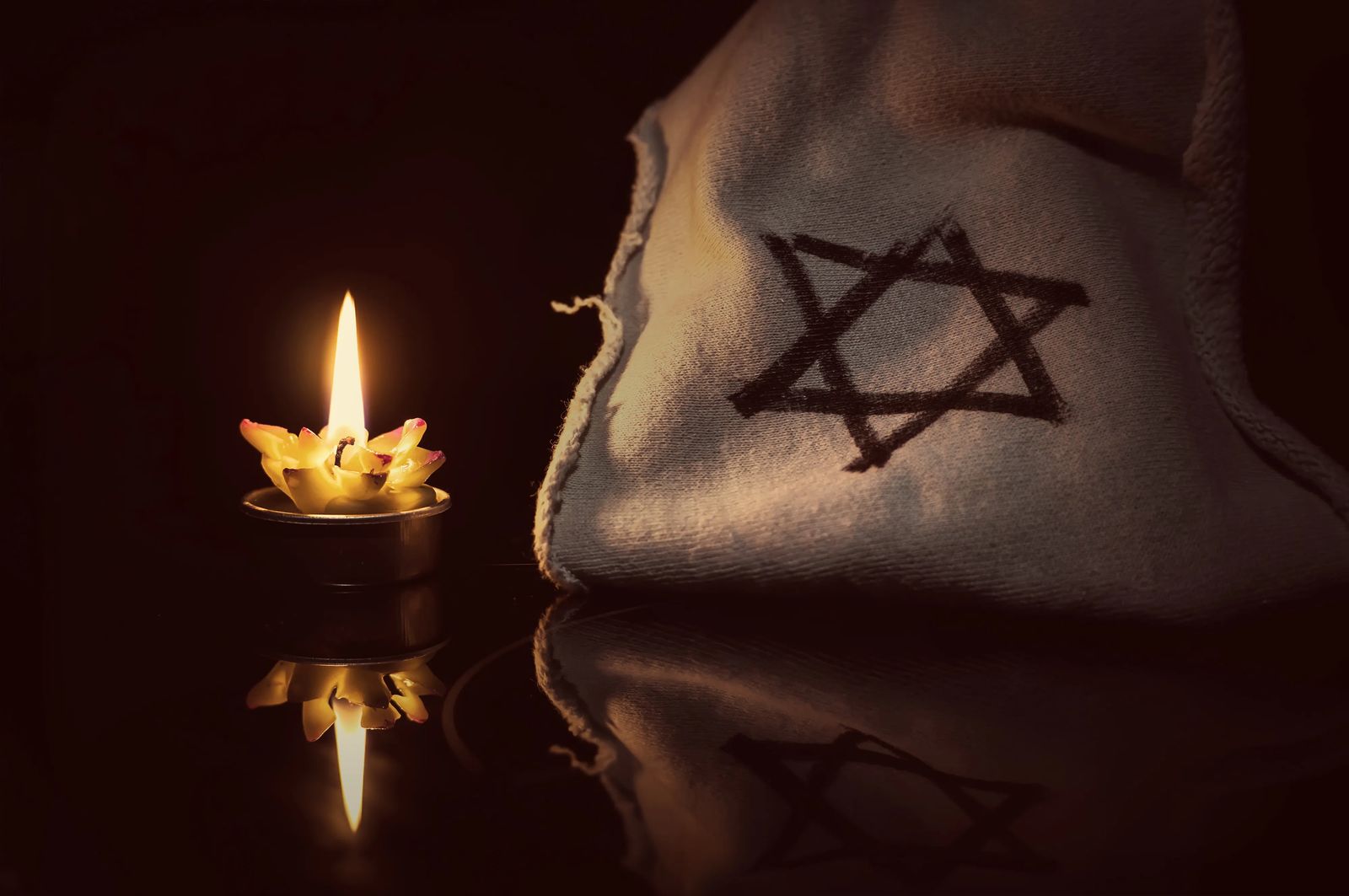
2- Jewish State Museum
This is the only Jewish Museum in Lithuania and has three different sections to it – the tolerance center, the Holocaust exposition, and the Memorial Museum of Paneriai.
It is chilling to think that half the population in Vilnius were Jewish before World War II. Over 90% of all Jews in Lithuania were killed, most commonly by shooting or burning in concentration camps.
As I was only in Lithuania for 48 hours I was not personally able to make it to this museum, unfortunately. I'm hoping to go back and explore Vilnius more as I don't feel I spent enough time there. From my research though there were a few things that were suggested to see while at this museum.
One of them being the Samuel BAK paintings as he was born in Vilnius and survived the Holocaust. He first started painting at nine years old in the Vilnius ghetto. His paintings are both beautiful and horrific, like you would see in a Salvador Dali painting.
The other areas were of the children's memorial, and the photo gallery that was celebrated all across Trip Advisor reviews.
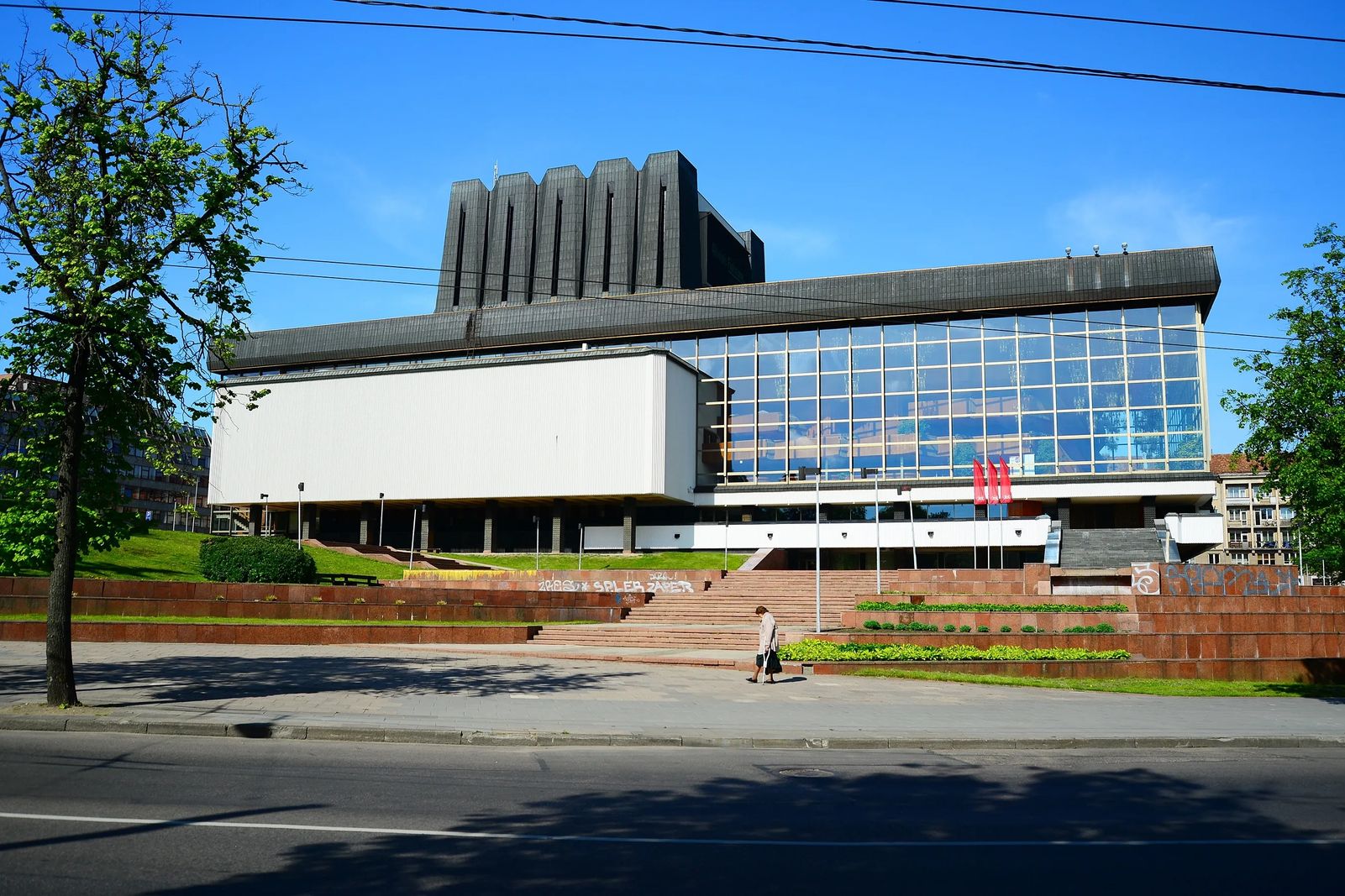
3- Opera House
The Lithuanian national opera house and ballet theater was built in 1974. It seats 1000 people and is the pride and joy of those in Lithuania, because of the long winter months theater, ballet, and opera were often the diversion people needed from the dark winter months to survive.
If you are planning on visiting Vilnius I would suggest trying to attend one of the productions. There is a variety of 19 production and the seasons lasts for 10 months out of the year.
As I was there in at the end of November, I was not able to see any of the shows but definitely regret it for how much the locals seem to love to talk about how good the productions here are.
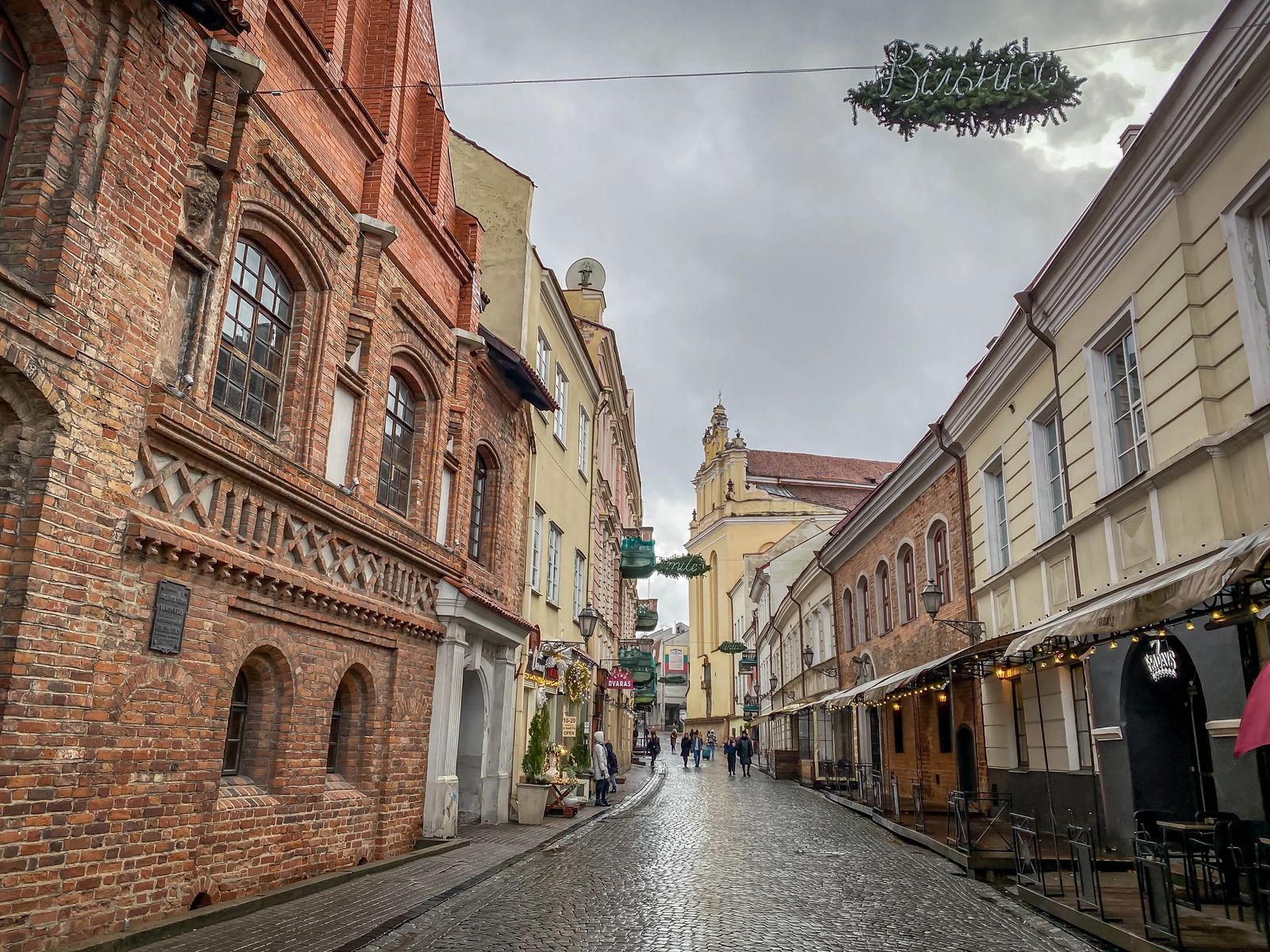
4- Pilies Street in Vilnius
This is the oldest street in Vilnius, dating back to 1530. Why is that important? This was the street that connected Vilnius castle, all the way towards Poland and Russia. Piles street was the main road to the castle that was used to celebrate victories of war.
As you walk down the street be sure to notice the different architectural styles of Pilies 12 and Pilies 14 which are in the Gothic style. The Renaissance style you will see more in Pilies 4, and the Baroque style you will see in St John’s Church (featured below).
Many of the university professors and high nobles lived along this street back in the day. In fact Vilnius University occupied a whole quarter-mile of this street at one point. If you peer into the many courtyards along this street you may discover the Botanical Garden of Vilnius University.
Wherever nobles live that you can guarantee there would be markets. Because of the quaint and cute and wildly historic nature of this street you can still find restaurants, shops, and boutique hotels along this street now.
This is also along the way to one of my favorite restaurants in Vilnius Etno Darvas. I will get into the best places to eat in Vilnius in another article though, so make sure to subscribe to the emails so you don't miss a thing.
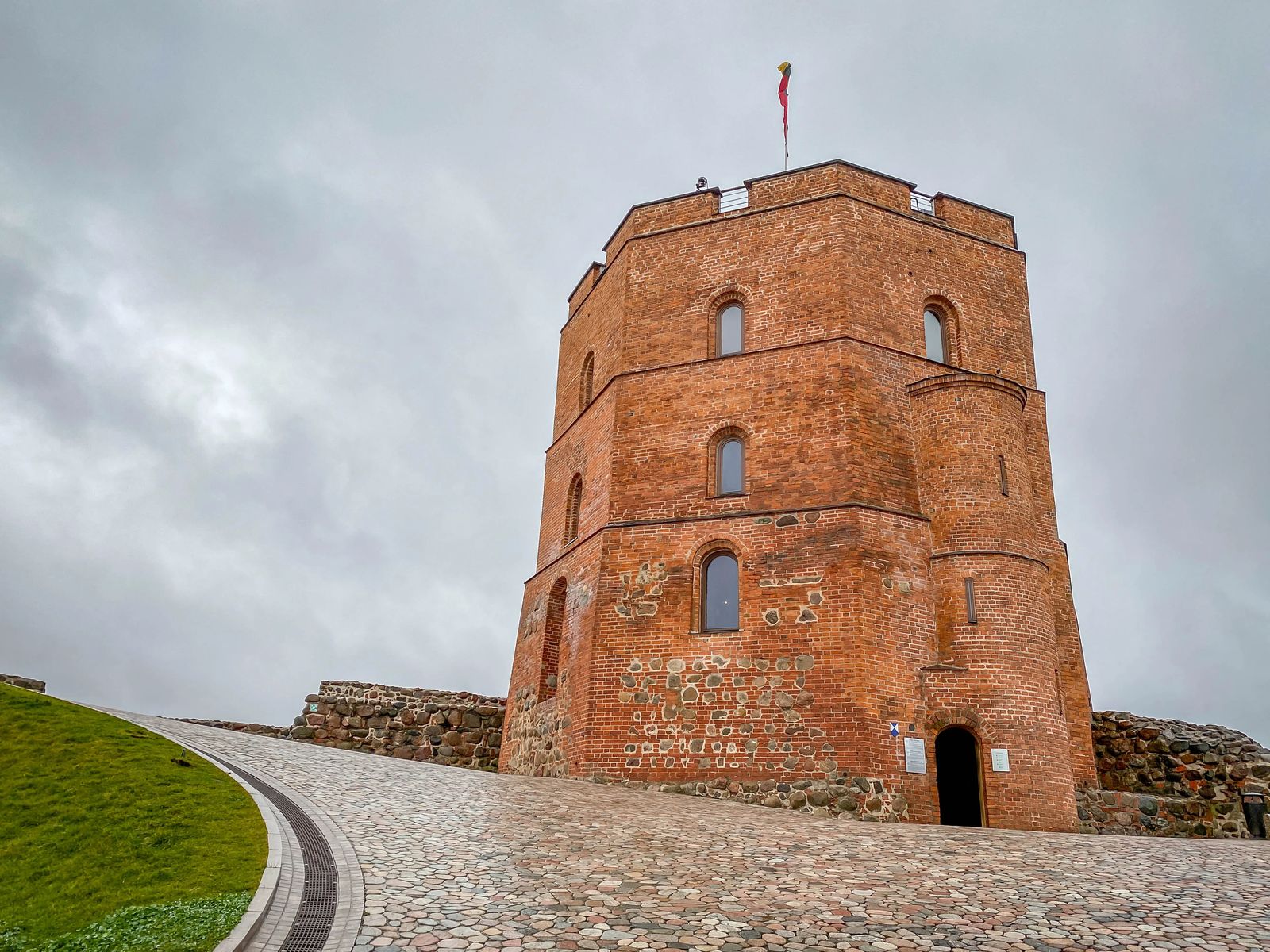
5- Gediminas Castle Tower
The Gediminas Tower was imagined by Grand Duke Gediminas long before it’s structure was even drawn out. Gediminas was out hunting in the woods near the Neris and Vilnius rivers. He fell asleep one night and had a dream that he was on a hill, and witnessed a great wolf made of iron that was howling loudly. The howl was so loud he felt that it made the ground shiver.
He awoke in a start and asked his pagan priest, Lizdeika, to interpret his dream. His interpretation revealed that Gediminas would build a city on top of a hill, and his rule would be heard by all the neighboring lands. Since that time, this castle has remained.
It was said to have been initially built as a wooden structure, then later converted to a stone structure. It is hard to miss the tower when you are in Vilnius as it definitely sits atop a grand hill.
You can either hike to the top of the hill, or take a tram to the top that only cost 2€. The entrance to Gediminas tower, Is around six euros for adults and three euros for students, but it's free with the Vilnius pass.
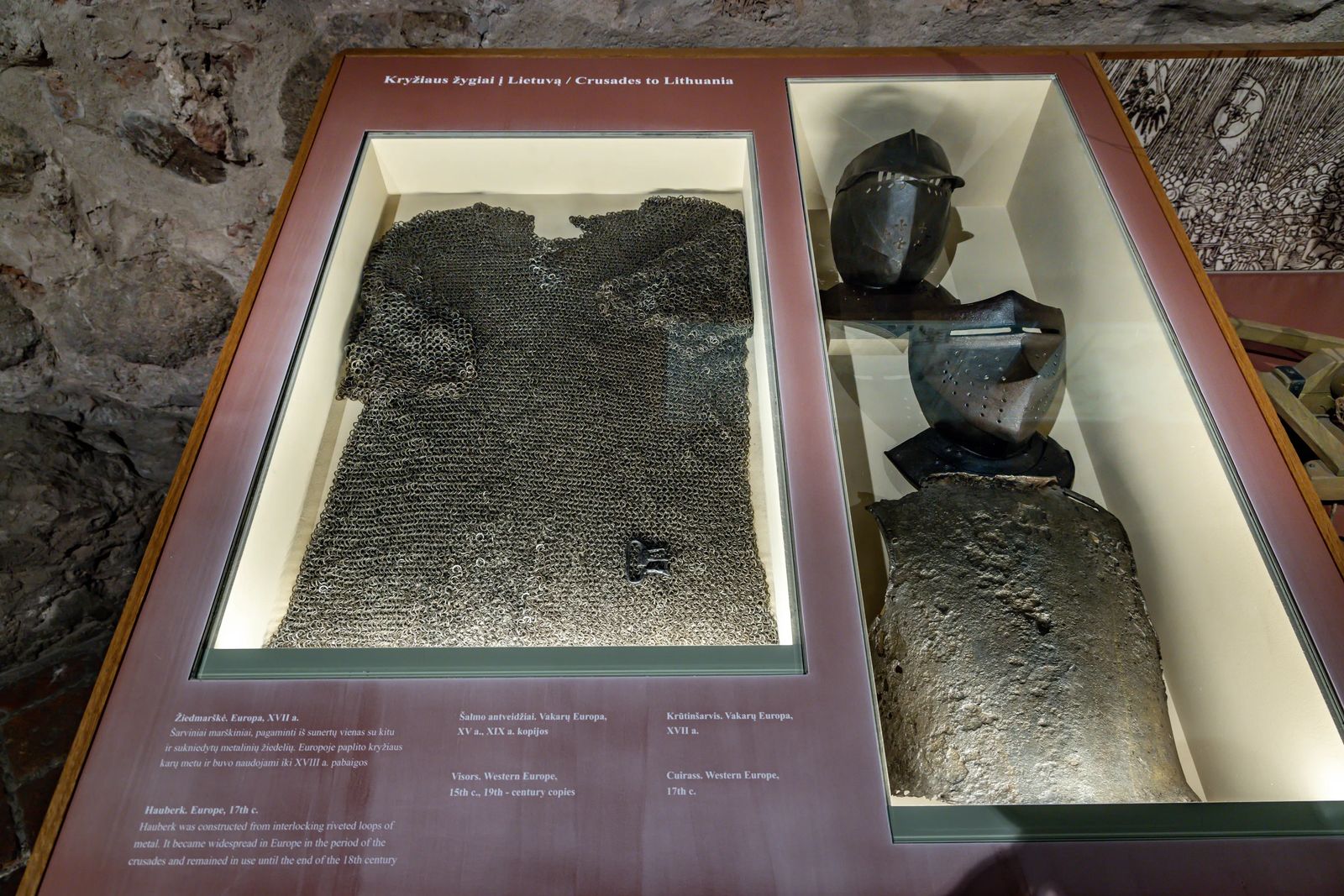

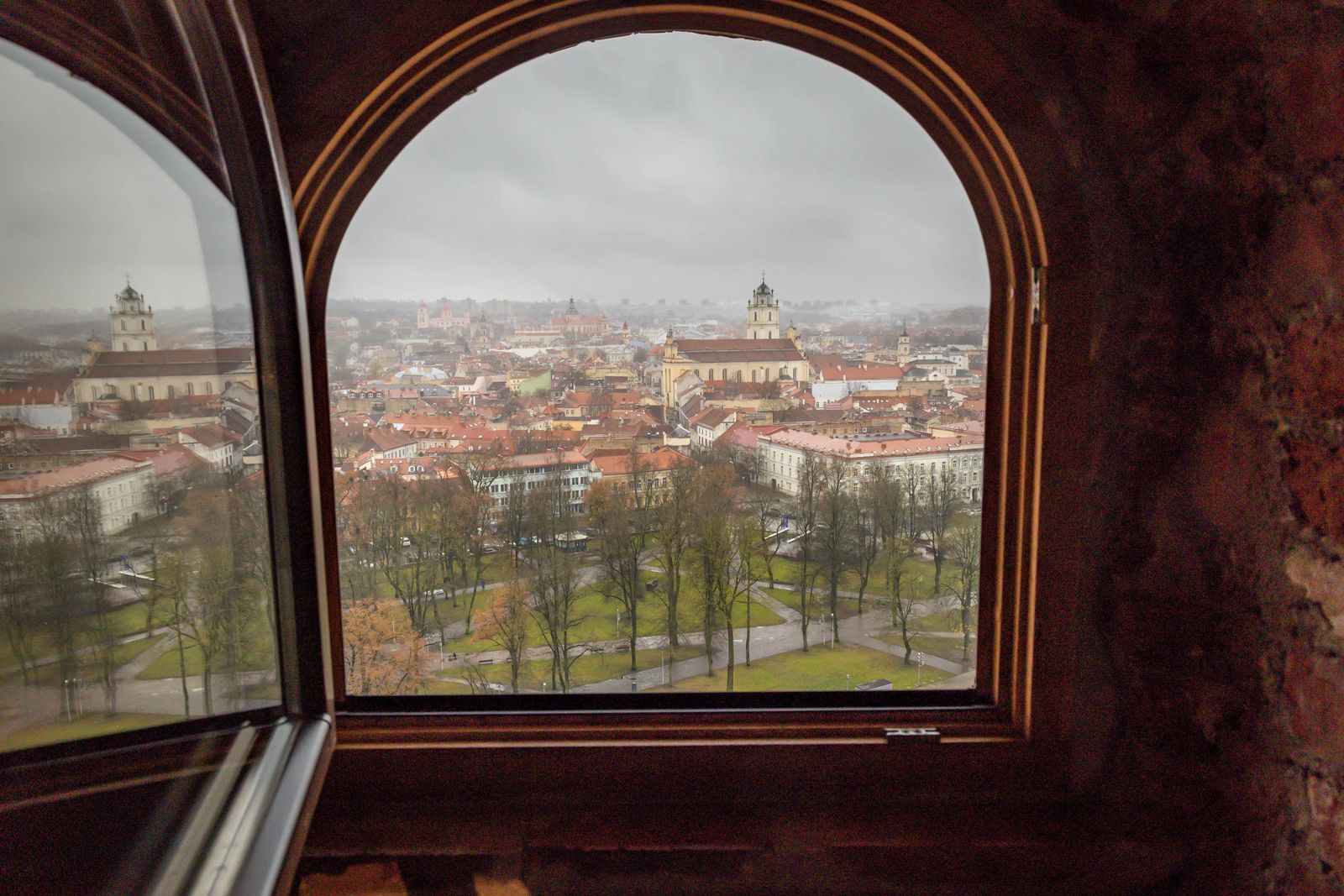
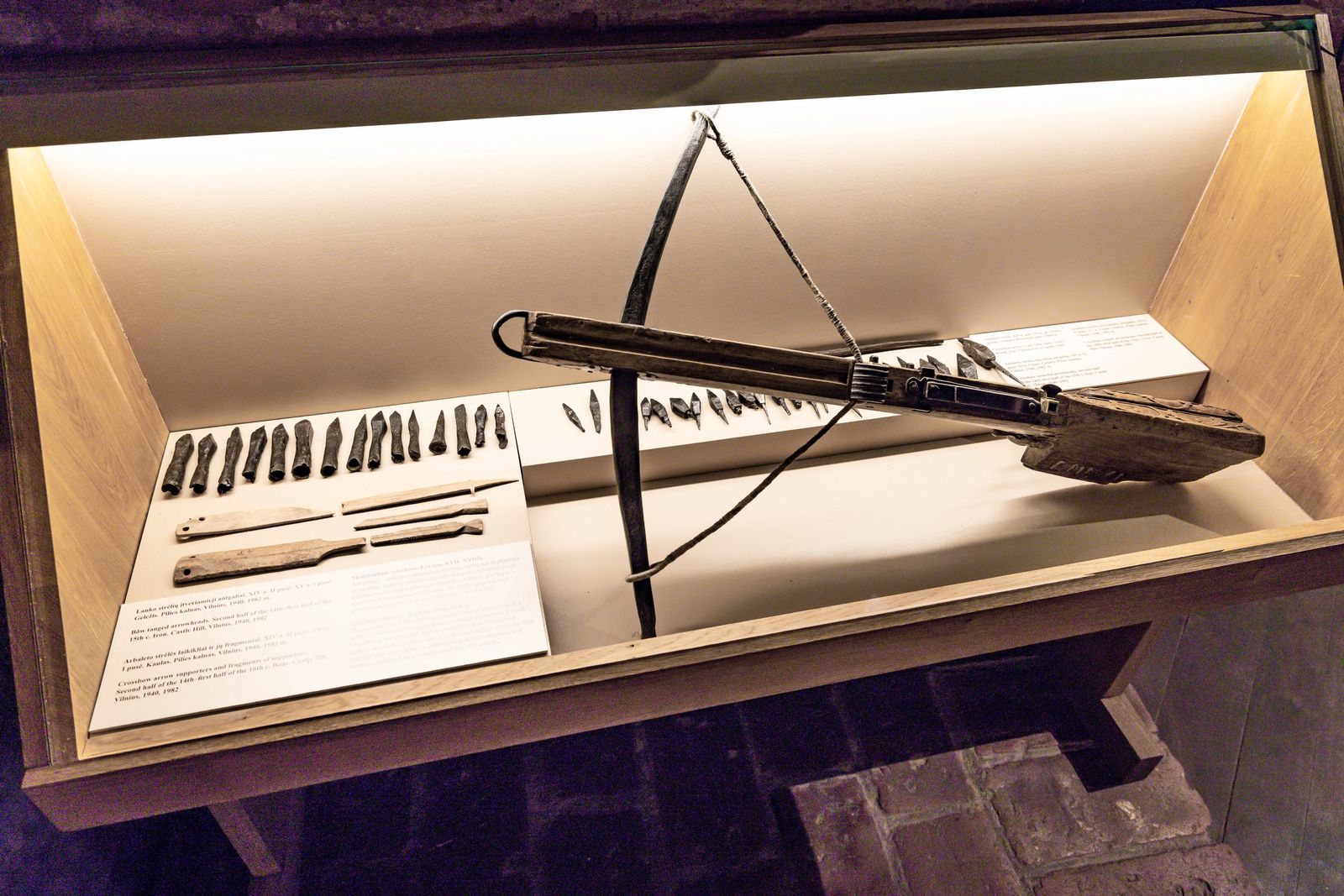
There are a lot of stairs in this castle, that are narrow and very steep. However, the climb is worth it if you get to the top. The bottom level is the entrance where you pay for your ticket. They also have an exhibit on that level of how the tower was once defended.
As you make your way to the second floor you will get a visual timeline from the 14th century up until modern day of everything the tower has been through and witnessed throughout history.
On the third floor, there is a moving video about a social event that happened during the soviet occupation, called the Baltic Way. This event took place in August 1989 when 2 million people linked hands along highways from Vilnius to Tallinn Estonia.
This is a distance of 373 miles or 601 km. In a day and age without cell phones or Internet, and often phone lines that were tapped by Soviet officers. I asked a local how they knew how to coordinate this, her answer chilled me to the bone. What she said was, "we just knew it in our hearts, and went out and did it. Of course there is always word of mouth, but we knew it was time".
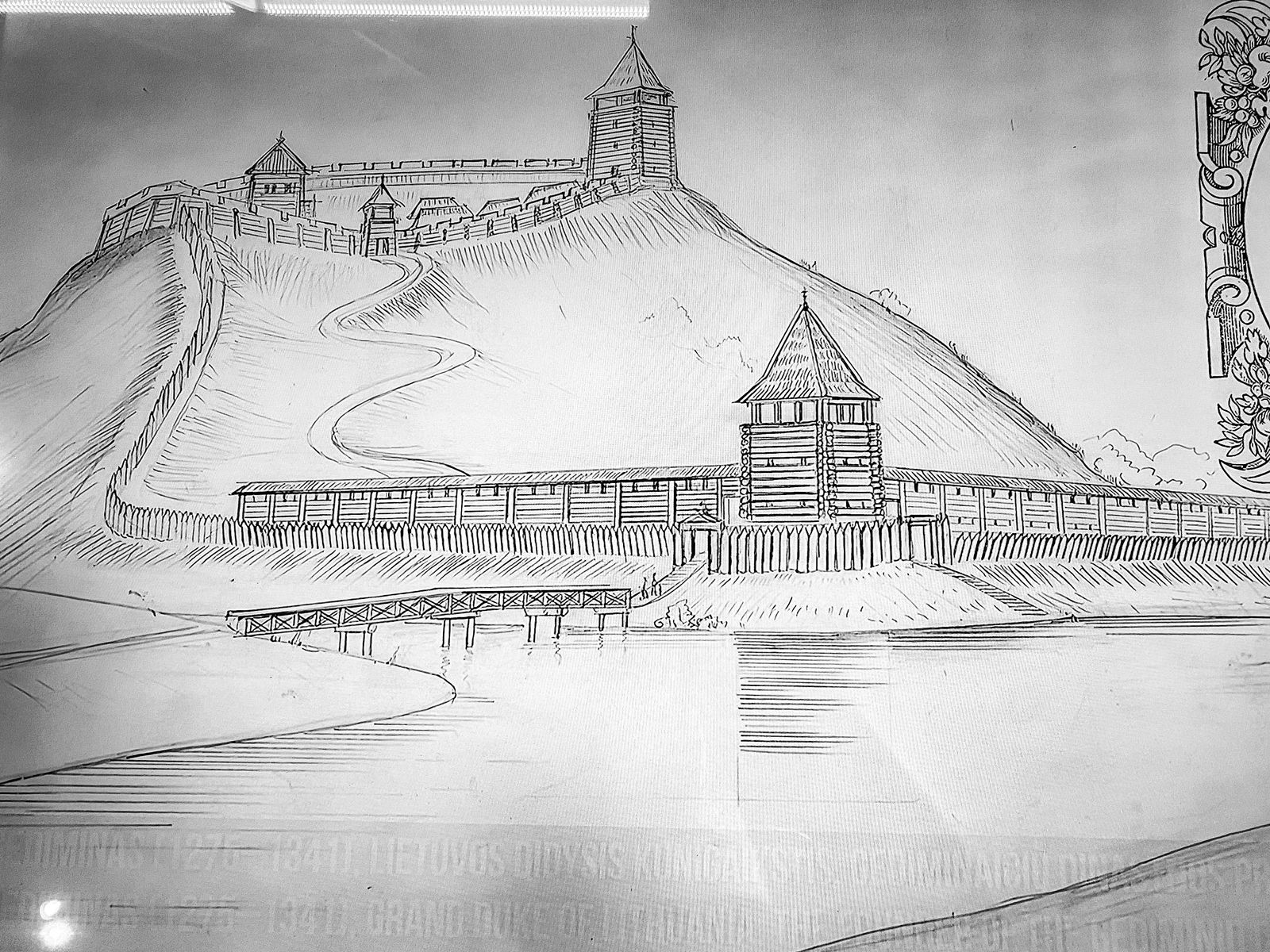
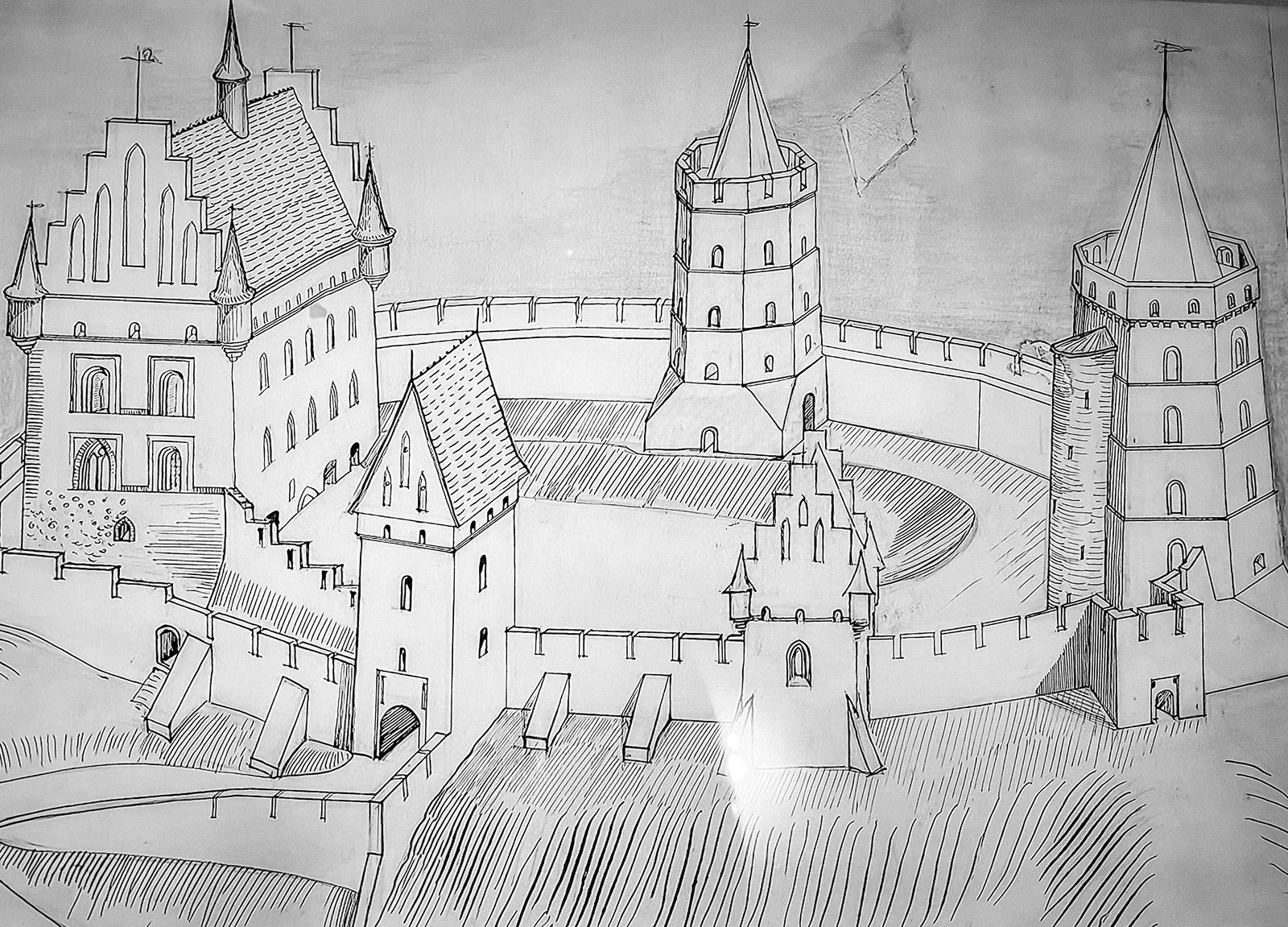
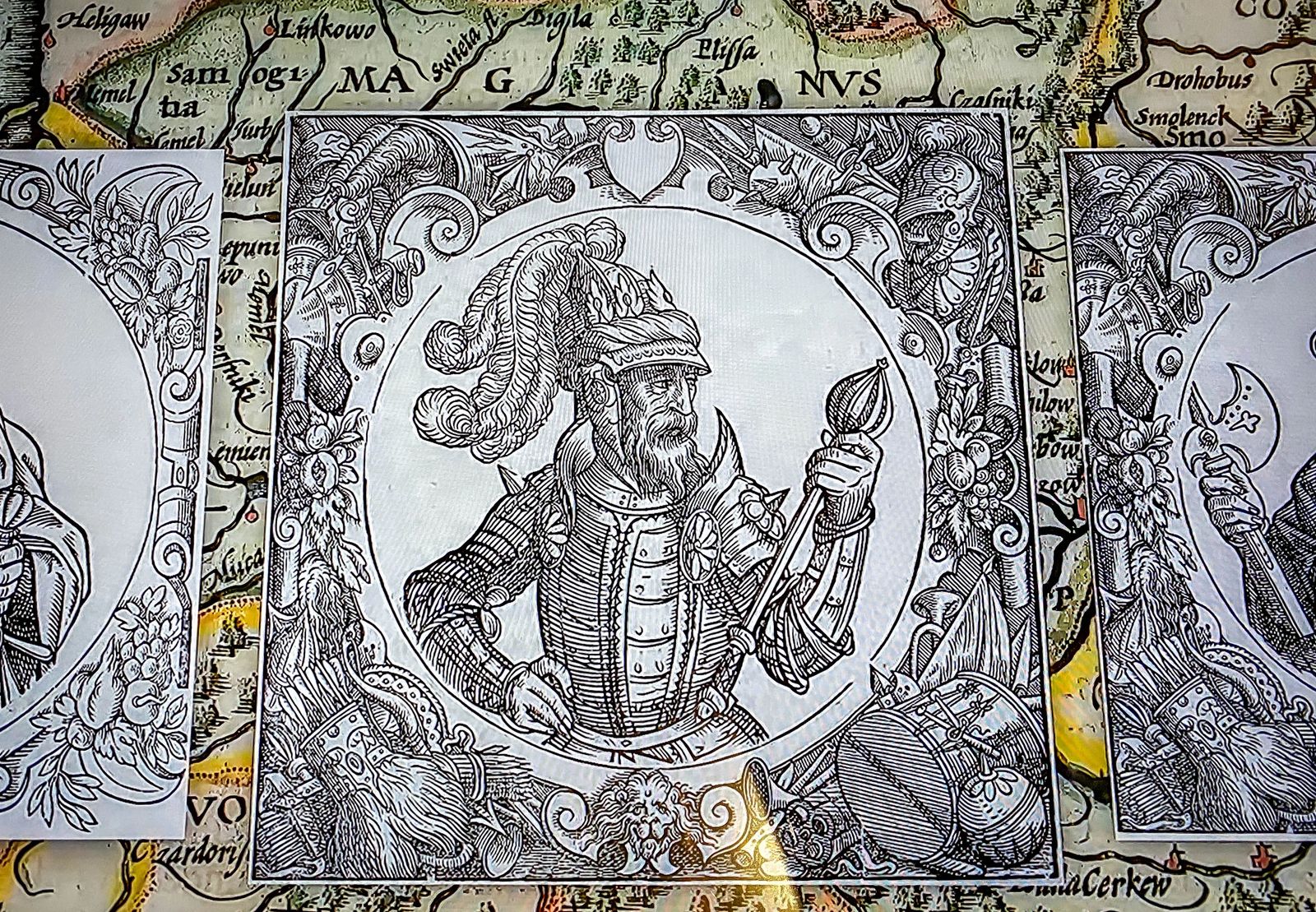

This event called international attention to the Baltic region, particularly from the European Union. Keep in mind, I have siblings who were born in this time period. This was a very dark and difficult time for the Lithuanian people, much of the trauma they endured they are still processing – some of it can be too painful for them to talk about.
Especially since there are many families who lost loved ones, or had people they love disappear and still don't know what happened to them so be sensitive in asking questions. You can watch a short movie in many languages including English, by picking up the earpiece at the back of the room.
After watching the movie you have one more floor above you which leads to the overlook from Gediminas tower. It is arguably one of the best places to see an overlook the city of Vilnius with unobstructed views. It overlooks the rebuilt Grand Palace, and the Vilnius Archeological Museum, and in the distance you see many of the notable churches important to the culture of Vilnius and Lithuanian history.
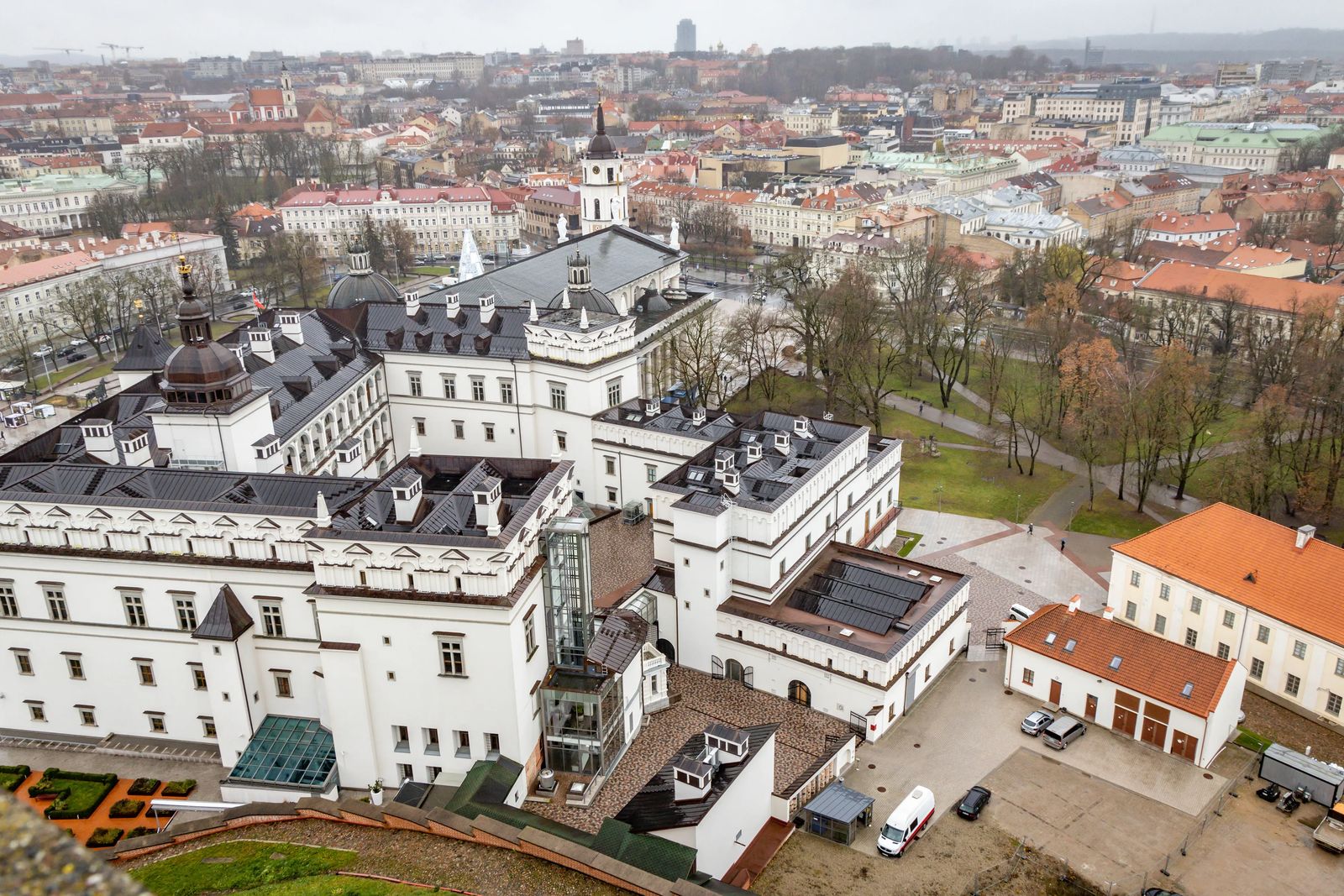
6= Palace of The Grand Dukes
This is the Palace of the Grand Dukes, the leaders of Lithuania. Lithuania once spanned from present-day Latvia all the way down through parts of Belarus. It wasn't until after a succession of wars that it fell in the 18th century.
It was ransacked by the Muscovites (Russians) at the beginning of the 1800s. After the War of 1811, all traces of the Grand Duke's that had ruled so much of Europe were destroyed.
The history of the Grand Duke's wasn't fully restored until 2018. Because of the Soviet occupation, much of Lithuanian history was wiped out during their rule and they are still slowly making their way back from that period of time.
The palace of the Grand Duke's is a great place to go visit especially during the winter in Vilnius. It is right below Gademinus Tower.
- Free on Sundays

7- Vilnius Cathedral & Catacombs
Vilnius Old Town is considered a UNESCO site, and the Vilnius Cathedral is the center jewel of the crown of Old Town. What you may not have known is that there are crypts of the Lithuanian rulers that were buried underneath the cathedral that were just recently discovered in 1984.
King Mindaugas was the only official King of Lithuania, as many of the 'rulers' were actually considered Grand Dukes rather than kings. The reason he is important in this story is that he was baptized in 1251 as a Roman Catholic, being the last Pagan state in Europe to adopt Christianity. This alliance with the Catholic church obviously did bring power, by creating an alliance with the Livonian Order, who were always antagonizing Lithuanians.
There is no actual proof of this, but many believe that Kind Mindaugas built the first wooden church structure right on this very spot that Vilnius Cathedral resides. There are hints from artifacts that it was built right over a Pagan temple to the God Perkūnas, the God of Thunder.
Well, this was the beginnings of Vilnius Cathedral, and its cribs there is so much history and intrigue in regards to this place I made a completely different article going into it in depth if you're interested here is the link for exploring Vilnius Cathedral and its crypts.
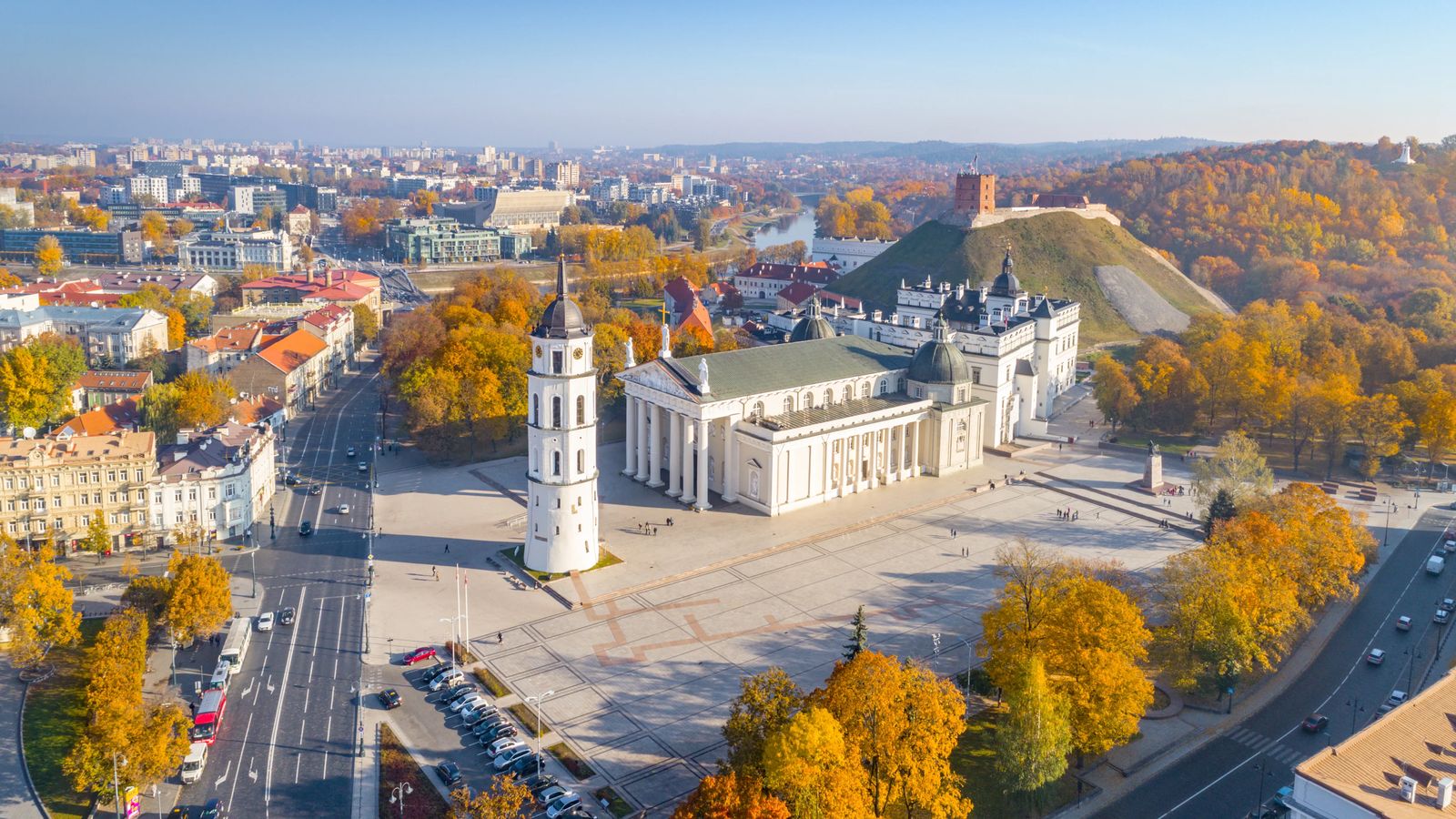
8- Cathedral Square
Cathedral Square is the main square in Vilnius that I highly recommend you make as your first stop. It is a great meeting place if you are group decides to go and see other things separately.
Cathedral Square was founded in the late 19th century. If you go from the tower and look on the ground you will see a red granite outline of where the castles defensive walls and Lower Castle remnants once stood.
The defensive walls connected the Cathedral tower to Gediminas Tower. These were once called the twin towers, and both were used as defensive outposts for the city against the Teutonic Order who made many attempts to capture the city (all of which failed).
If you are here during Christmas time, you will see the tallest Christmas tree in the city erected here. This is where many of the celebrations of Vilnius take place.
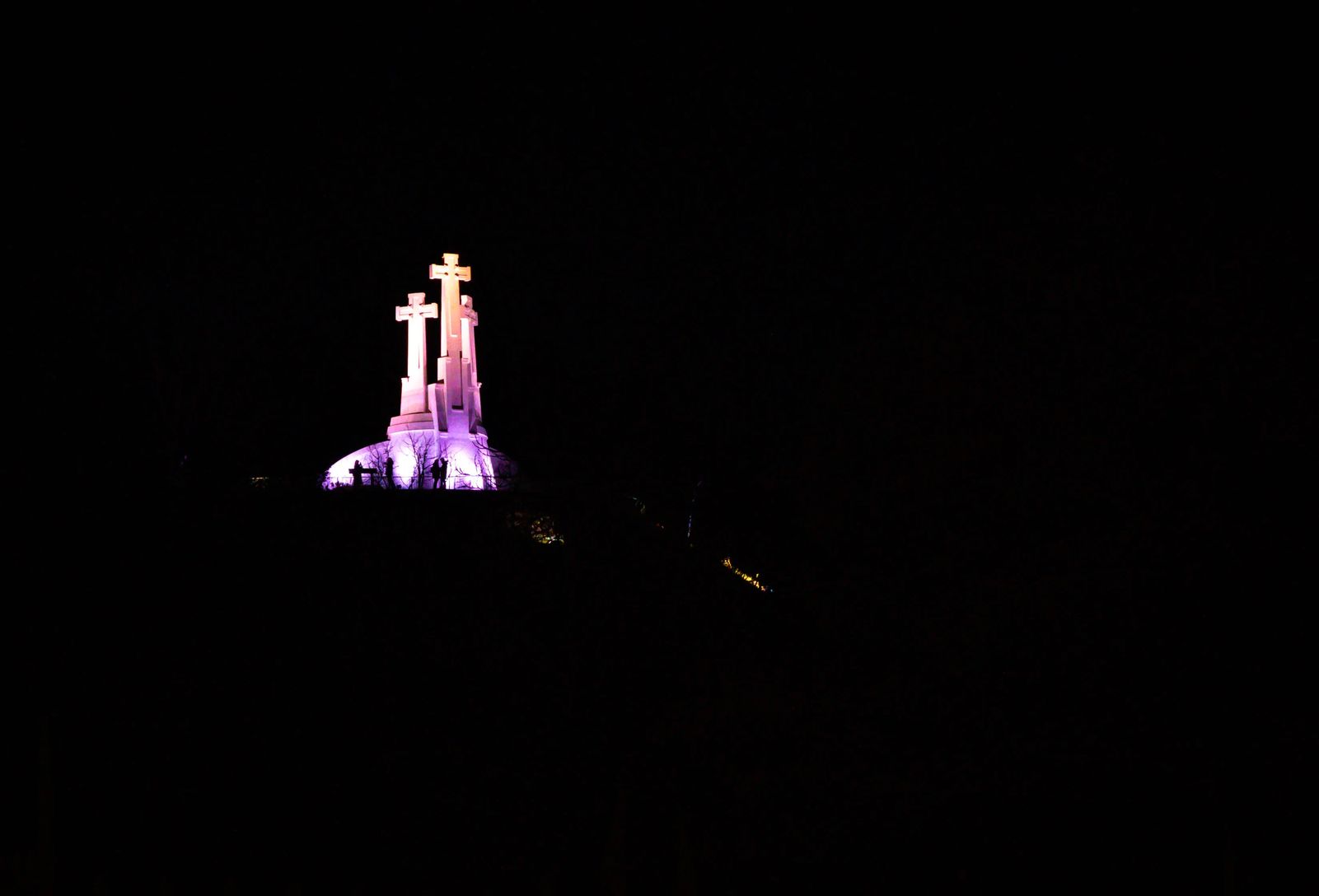
9- The Hill Of Three Crosses
This is the Hill of Three Crosses, that is about a five minute walk from Cathedral Square. It was the 12th and 13th century, around the time that seven Franciscan monks decided to come preach to the Pagan people of Lithuania prior to the conversion of Lithuania to Christianity.
The hill got its name after these seven Franciscan monks died as martyrs. The monks were beheaded Pagan worshippers tied them to crosses and threw them down the hill.
It wasn't until 1916 that these were built to commemorate and honor that event that helped usher in Christianity to Lithuania. As Lithuania, post-Soviet rule, regained its ability to worship as they please, which is largely Roman Catholic in practice.
This is also a great overlook of the city, and the 39 foot (12m). You will see the crosses lit up in different colors to celebrate different events throughout the year. The events celebrated are largely Lithuanian, but also Christian celebrations from around the world.
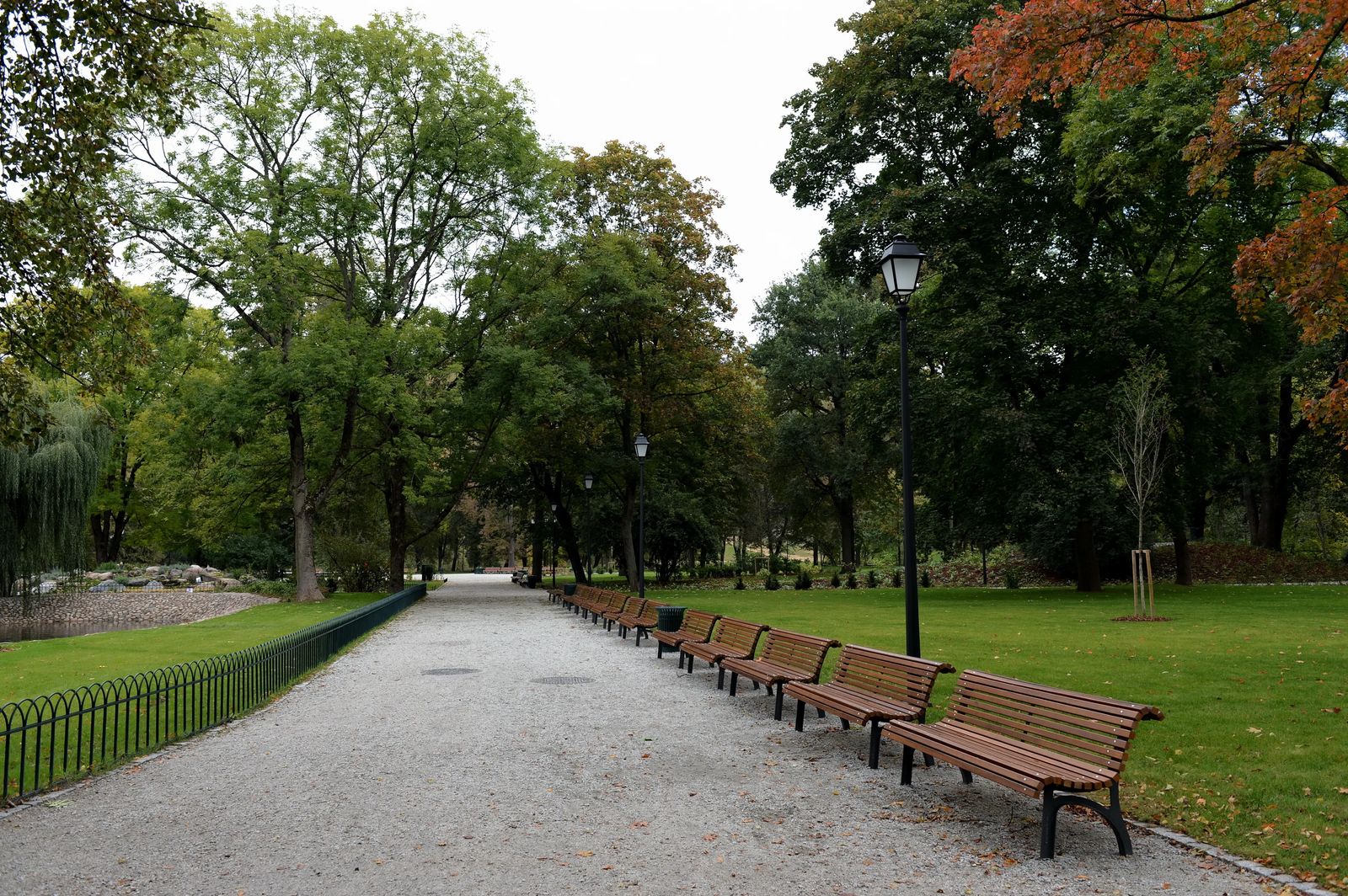
10- Bernardine Garden
Bernardine Gardens are named after the Bernardine Monks that used to grow medicinal, aromatic, vegetable, and tea plants here. Some say it still holds healing properties in its beauty for those in Vilnius.
There are reconstructed areas of the park you can visit, rebuilt from the 19th century. I suggest visiting the alpinarium a gorgeous pond with a great place for a picnic if you are visiting during the summer. There is also Belvedere Hill, a decent overlook of the surrounding area, and nearby Vilnius River. They also have walking trails, fountains, and concerts in the summers here.
If you have the time and are there during the summer (I was not) check out the Botanical Exhibit. It is said to be one of the largest botanical gardens in Eastern Europe. It allegedly houses Ginkgo Biloba, Wild Dogwood, Pseudotsuga from Canada, and a Black Pine said to be one of the three oldest trees in Vilnius.
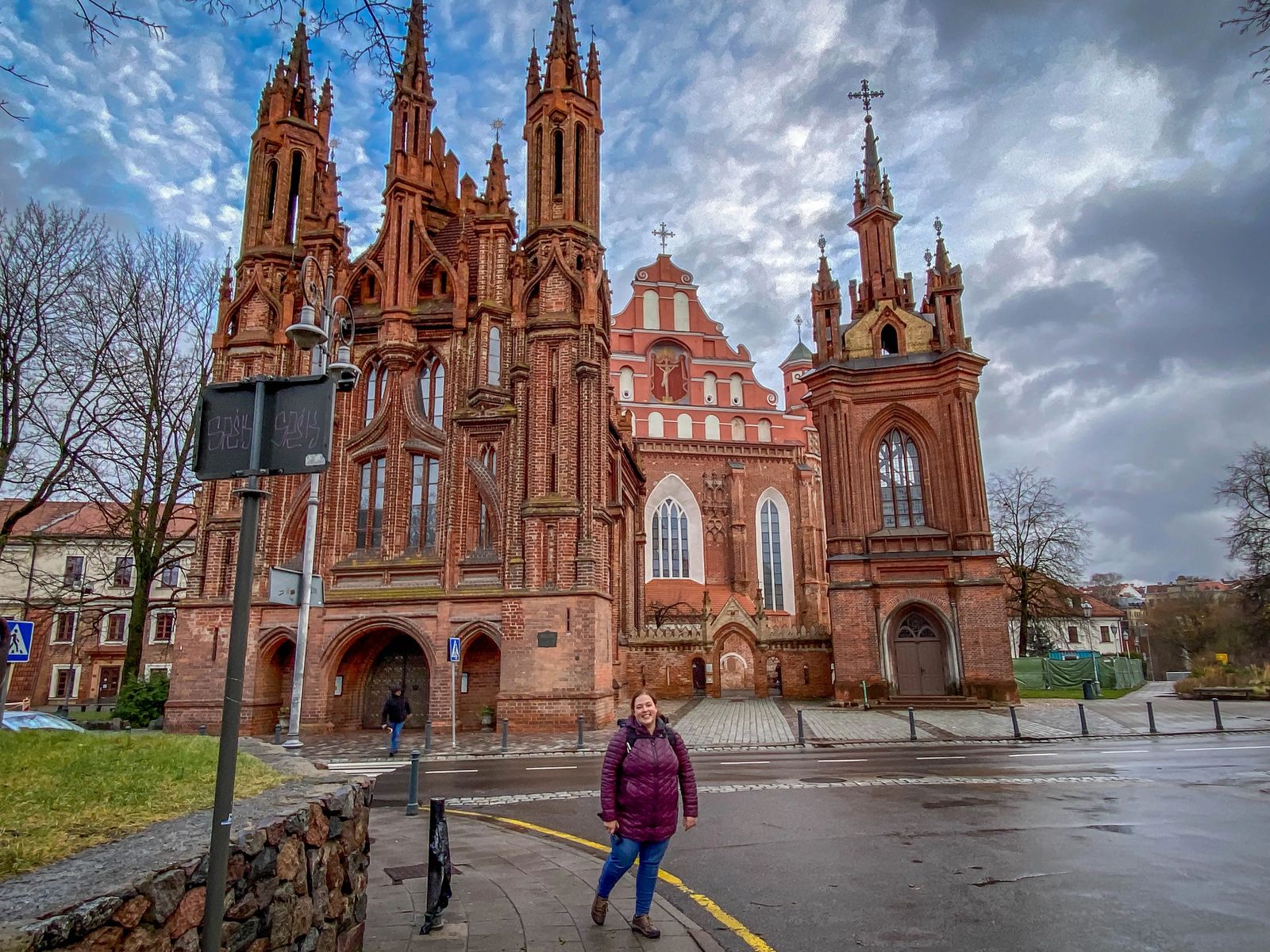
11 - St Anne's Church
Saint Anne’s Church is built in the Flamboyant Gothic style inside Old Town, and is one of the main reasons Vilnius was included as a UNESCO Heritage site. It was built by Vytautas the Great for his wife Anne, the Grand Duchess of Lithuania.
It started as a wooden structure, then the red brick was added by Grand Duke Alexander I Jagiellon in 1495, and has largely remained unchanged since then.




In the 16th century the church was incorporated into the defensive walls of the city, so if you play Where’s Waldo, you might spot some of the slits they used to shoot their attackers.
There is a legend that says that when Napoleon came to visit in 1812, he passed by the church and said he wished he could take it home with him in the palm of his hand.
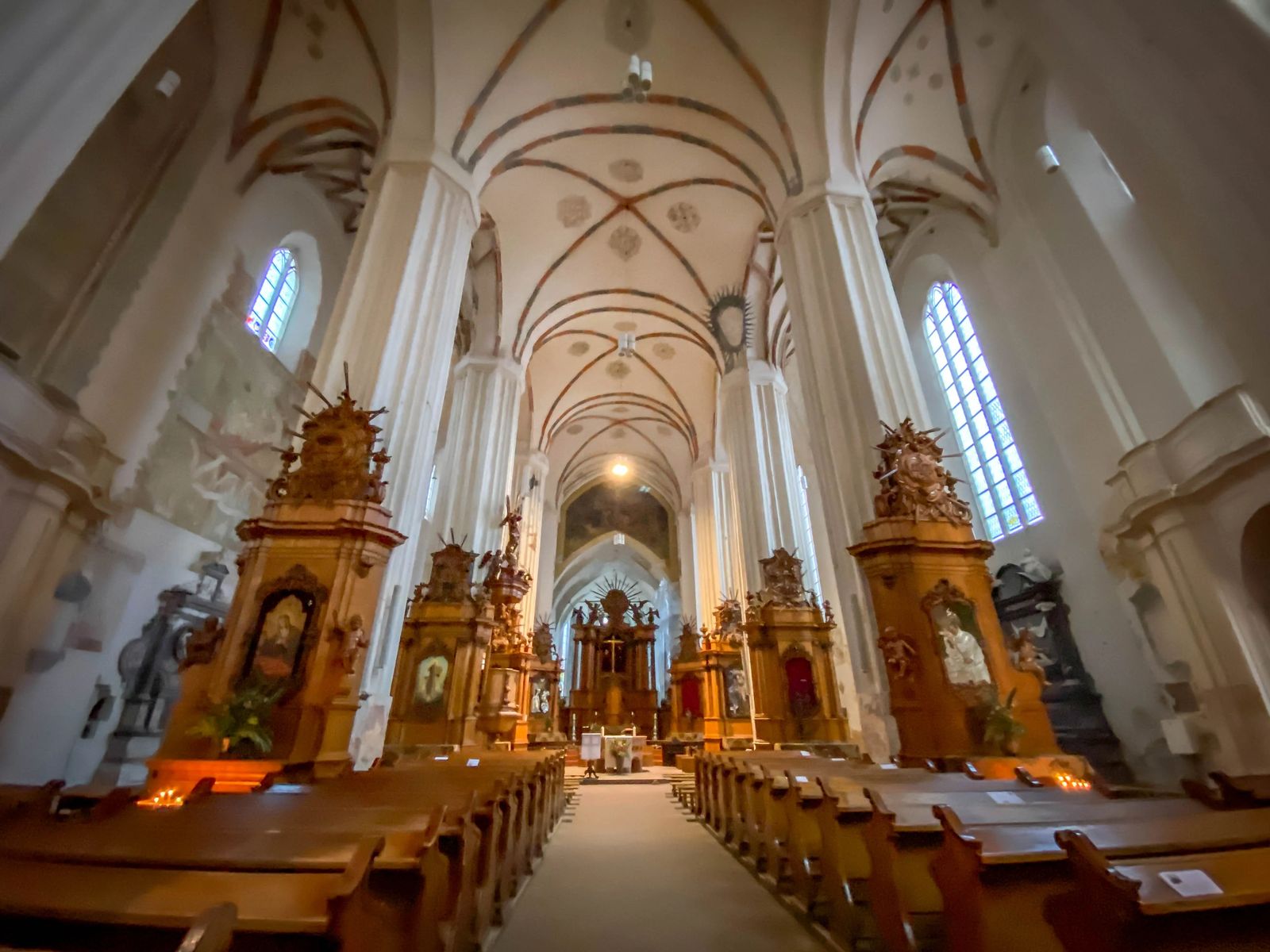
Another legend says that a master architect and his young apprentice were disagreeing about the building style, so the master left and told him to just finish it. The young apprentice stunned his master with three elegant towers, and he became so enraged with jealousy he pushed him off the roof and he died. The legend says, that is why the church is red…..but who really knows if that is true.
If you go just behind St Anne’s Church you will find a more archaic church of St Francis, along with the Bernardine monastery (where the mass graves of those who died of smallpox were found and the area quarantined for quite some time). These three buildings are some of the most sacred to the people of Lithuania. To be honest, the church is magnificent on the outside. I can confidently say this was one of my favorite buildings in Vilnius for sure.
The church is open Tues-Fri 430 pm-7pm, Sat from 1030 am-7 pm, and Sunday 9 am-5 pm.
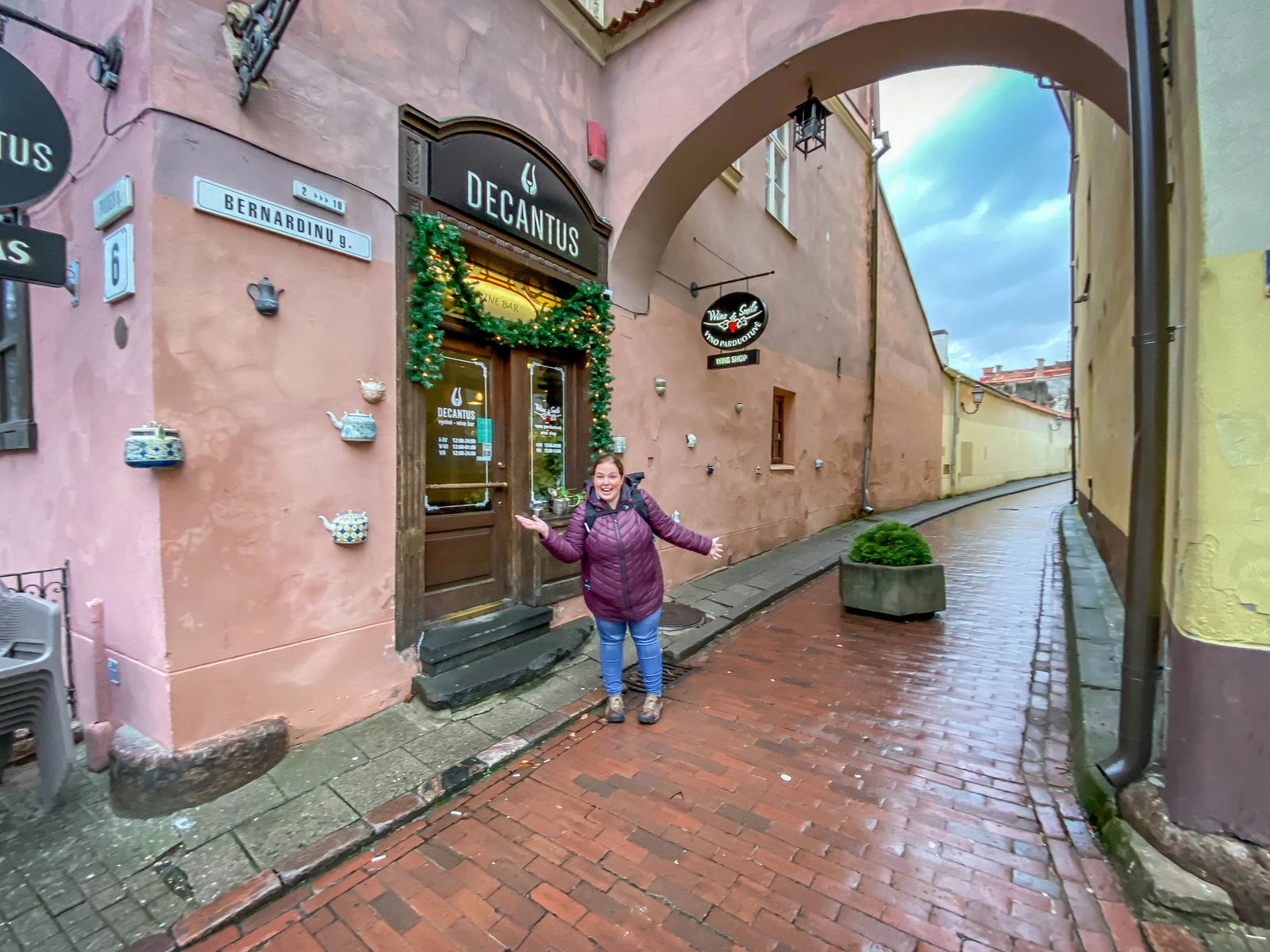
12- Bernardinu Street
Well, the street doesn't necessarily have a long history to it, it is a very Instagram worthy spot to take a photo. Why do you ask? Because of the embedded teapots in the wall near the juncture of Bernadine and Pilies street.
The tea pots are intricately decorated ceramic teapots that span the entire building. I was so entranced by how picturesque this corner was, I completely forgot to go in the shop. Well that, and typically most spots in Vilnius, when I went (November 2021), required a QR code to ensure our vaccines were valid.
It is definitely one of the funner Instagram Photo spots of the city and will be one I keep for awhile. Yes I know I’m not an instagram model, but I love the unique and weird spots in cities just like this. Just wait til I show you Uzupis.

13- Vilnius University
There wasn't enough time for me to go and see Vilnius University and all of the wonderful things there, but I wanted to include it into this guide. Why is this University so special? It is the oldest university in the Baltic states.
It is actually ranked in the top 400 Universities in the world! It was started in 1579 and has an incredible Littera Library with stunning paintings in the Gothic vaults under the university. It contains almost 5 million books ranging from the 15th-18th century. You may need to take a guided tour to see the library.
The original university also had 12 different observatories and are the round towers with different constellations decorating each.
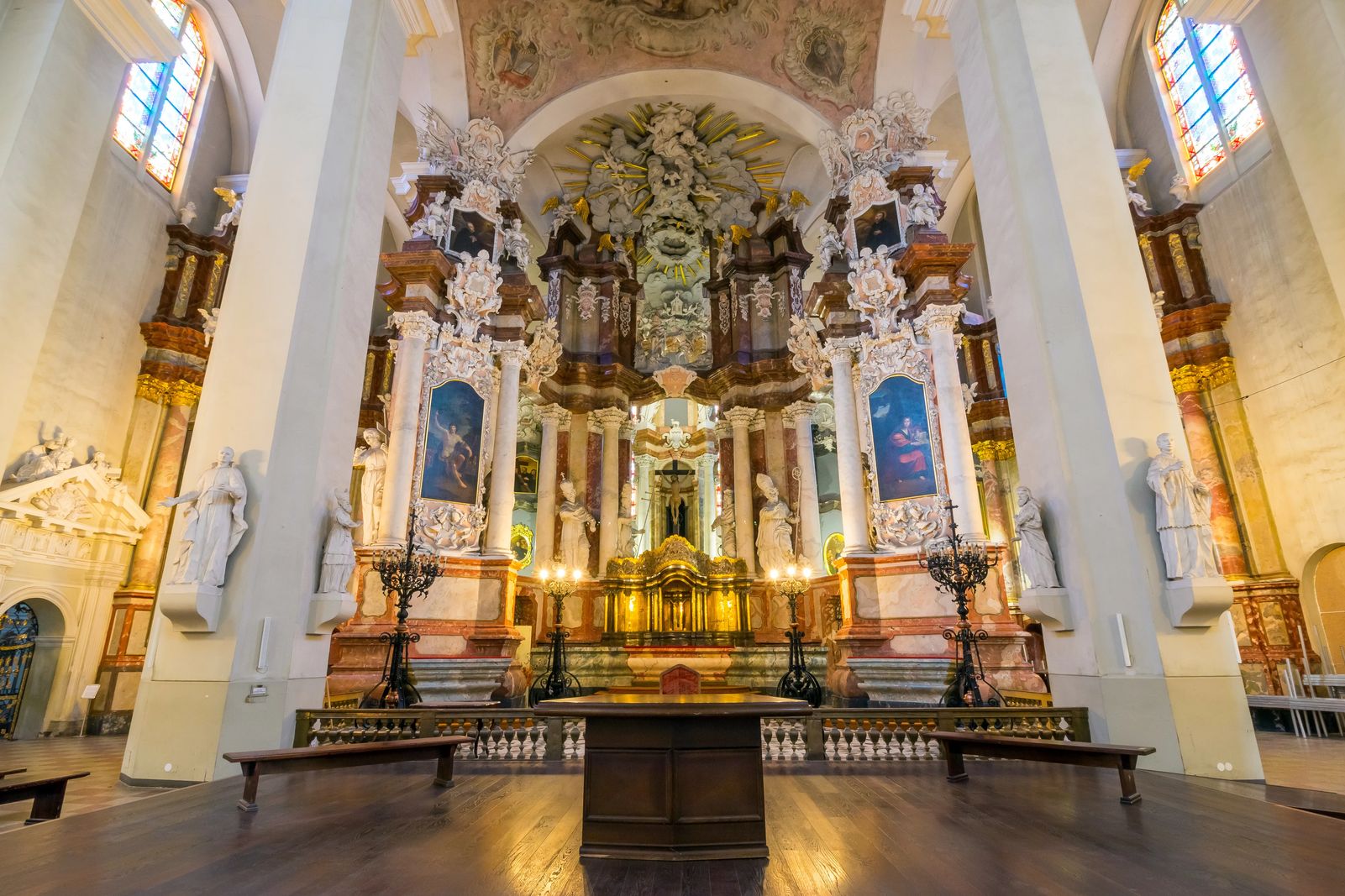
14- St John's Church
This church is also considered to be a part of the Vilnius University. It is built in the Gothic style and took nearly 40 years to complete, opening its doors in 1426.
It was given to the Jesuit order in 1571, and has one of the most stunning bell towers and tallest in the city standing at 223 ft (68 m) high. During the Soviet Era, it was turned into a warehouse with much of the original Baroque interior being destroyed.
The 18 statues in the nave, 12 of which represent various Saints bearing the name John. The organ that once graced this interior was the most famous one in Lithuania, but unfortunately was destroyed during the Soviet Era. It has since been restored and you can see this gorgeous organ and church Mon-Sat from 9am-6pm.
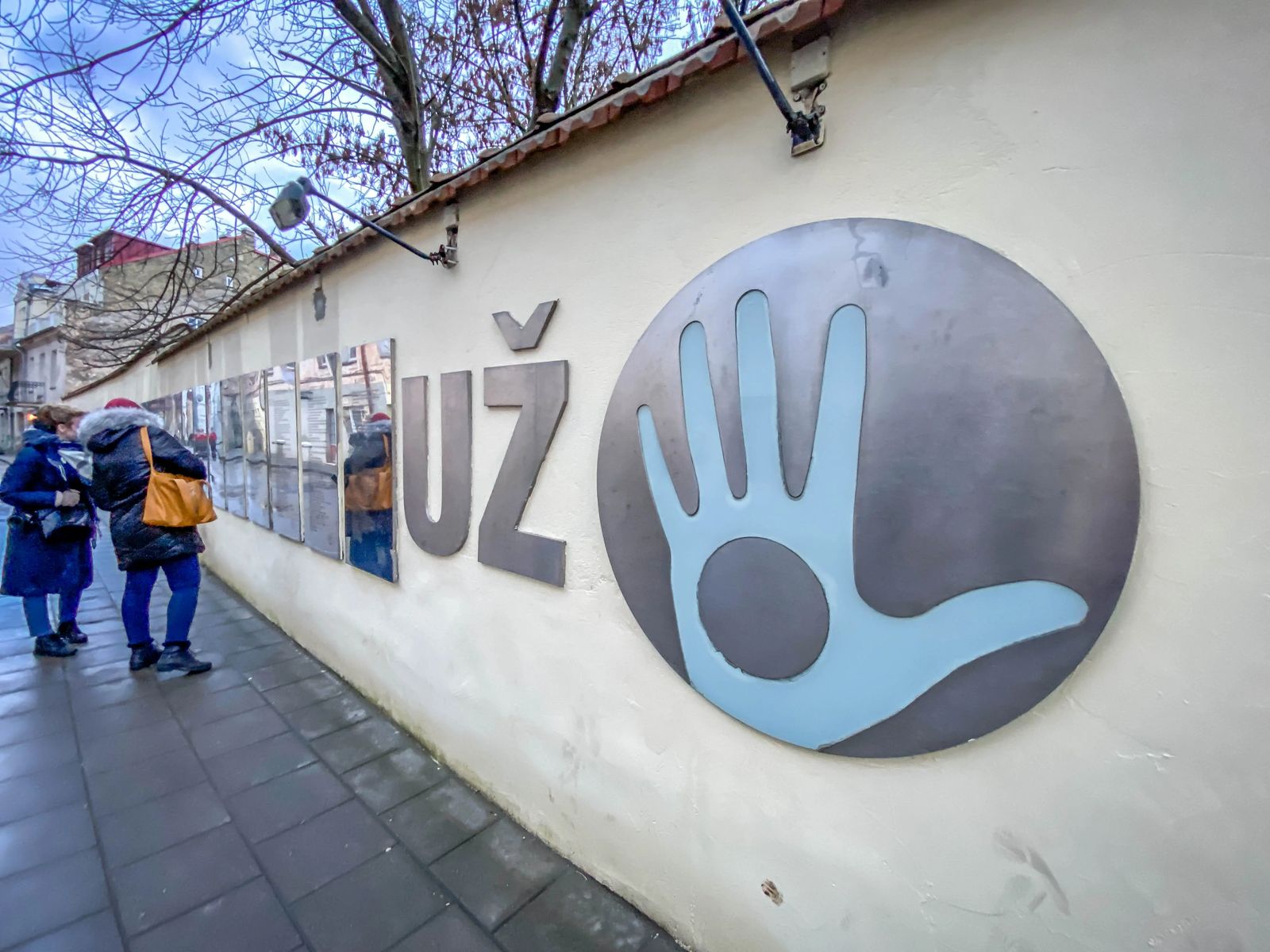
15- Visit Užupis
Užupis means over the river, [and through the woods, to grandmothers].....oops....sorry, lol. This area was really dangerous in the 1990's, but it was after a group of artisans moved in and developed the area that an idea of independence was formed. Užupis declared independence on 1 April 1997, creating its own constitution and all.
The Užupis Constitution is a bit of a tourist hot spot, but I couldn't resist going to see the different 'rules' they had created for their community. Here are a few of my favorites:
- Everyone has the right to hot water, heating in winter and a tiled roof.
- Everyone has the right to die, but this is not an obligation.
- Everyone has the right to make mistakes.
- Everyone has the right to be undistinguished and unknown.
- Everyone has the right to idle.
- Everyone has the right to love and take care of the cat.
- Everyone has the right to look after the dog until one of them dies.
- A dog has the right to be a dog.
- A cat is not obliged to love its owner, but must help in time of need
- Everyone has the right to be happy.
- Everyone has the right to be unhappy.
- Everyone has the right to be silent.
- No one has the right to violence.
- Everyone has the right to appreciate their unimportance.
- Everyone has the right to understand nothing.
- Everyone shall remember their name.
- No one can share what they do not possess.
- Everyone is responsible for their freedom.
- Everyone has the right to cry.
- No one has the right to make another person guilty.
- Everyone has the right to not to be afraid.
- Do not defeat.
- Do not fight back.
- Do not surrender.
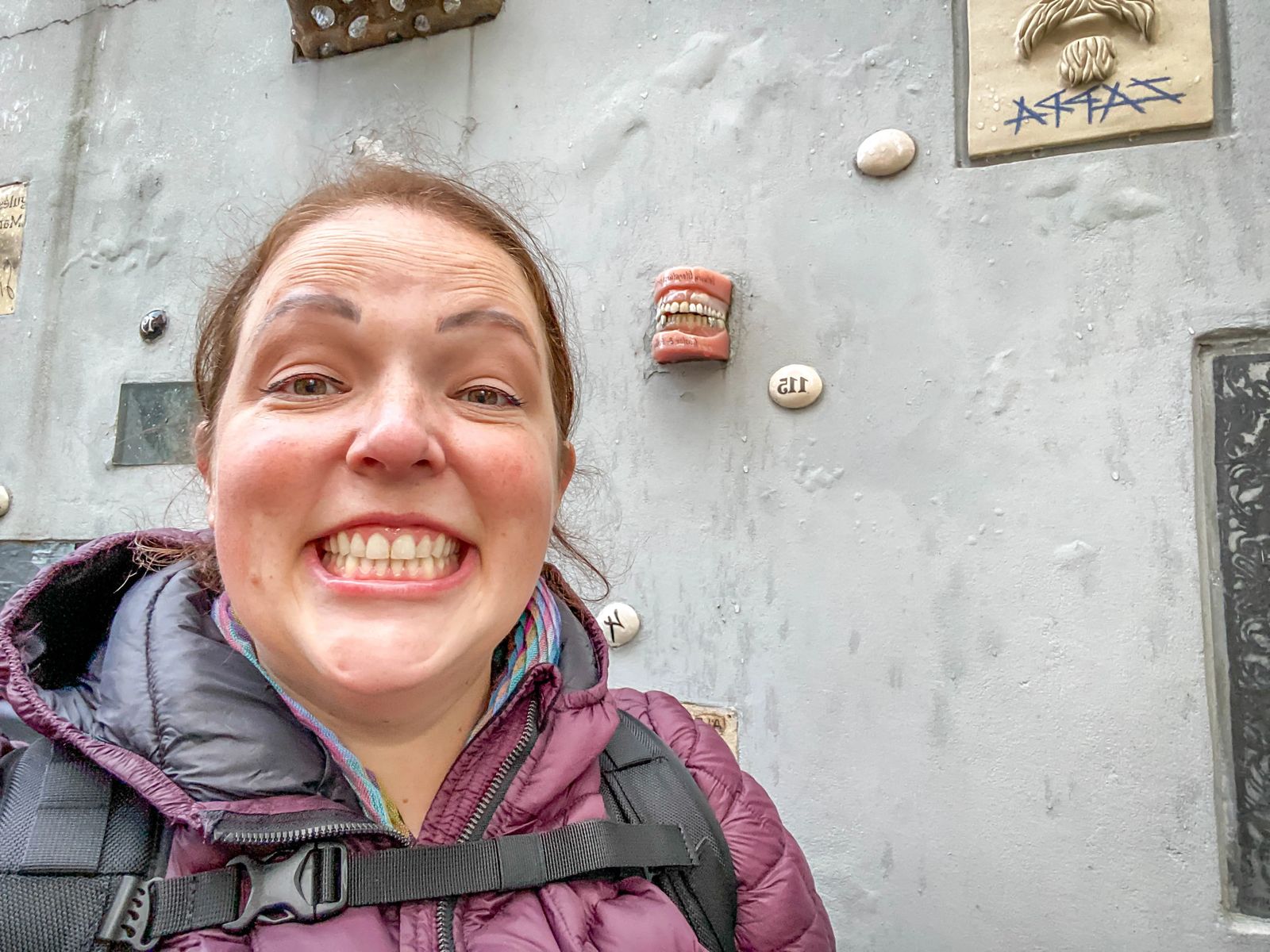
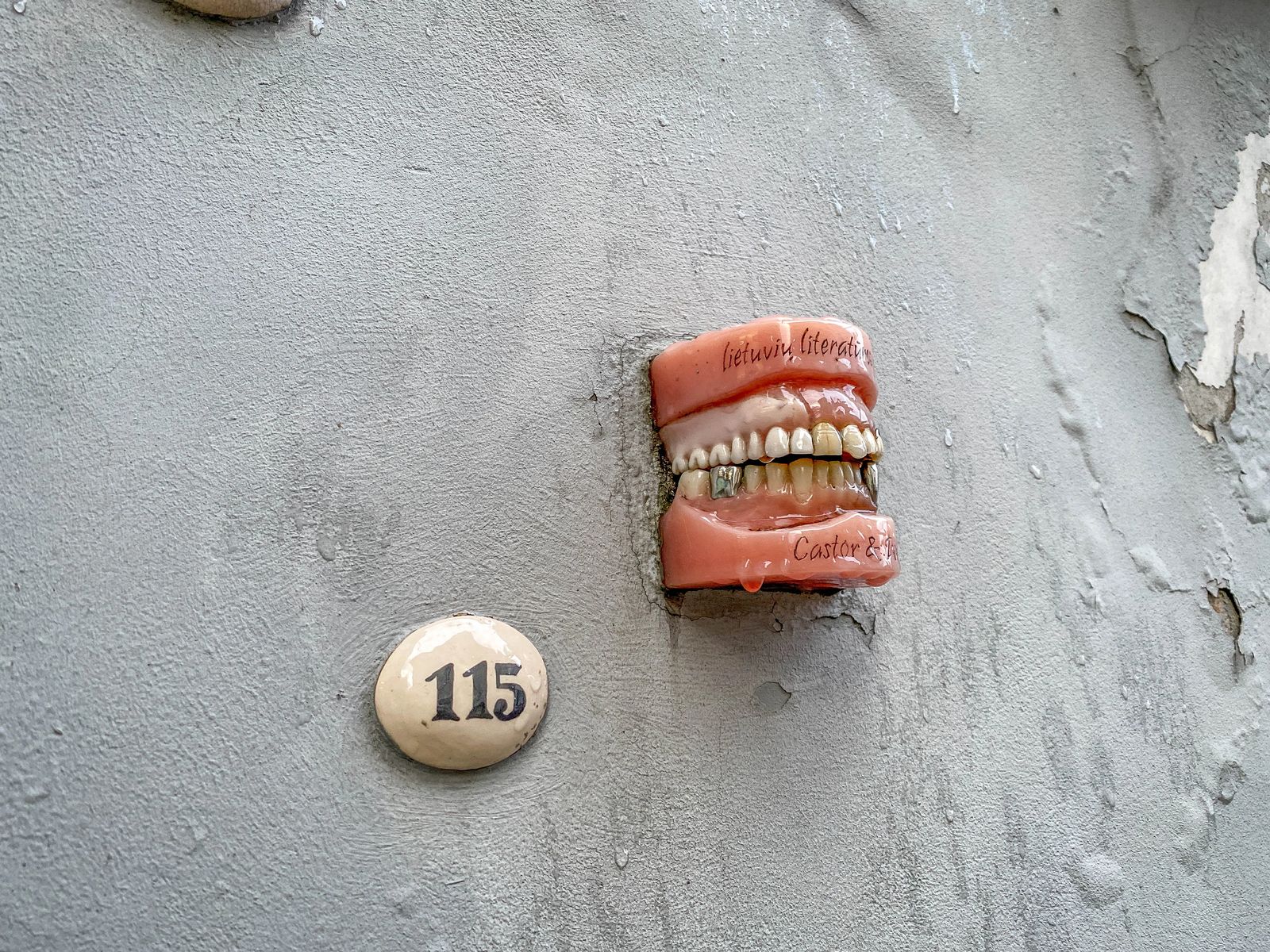

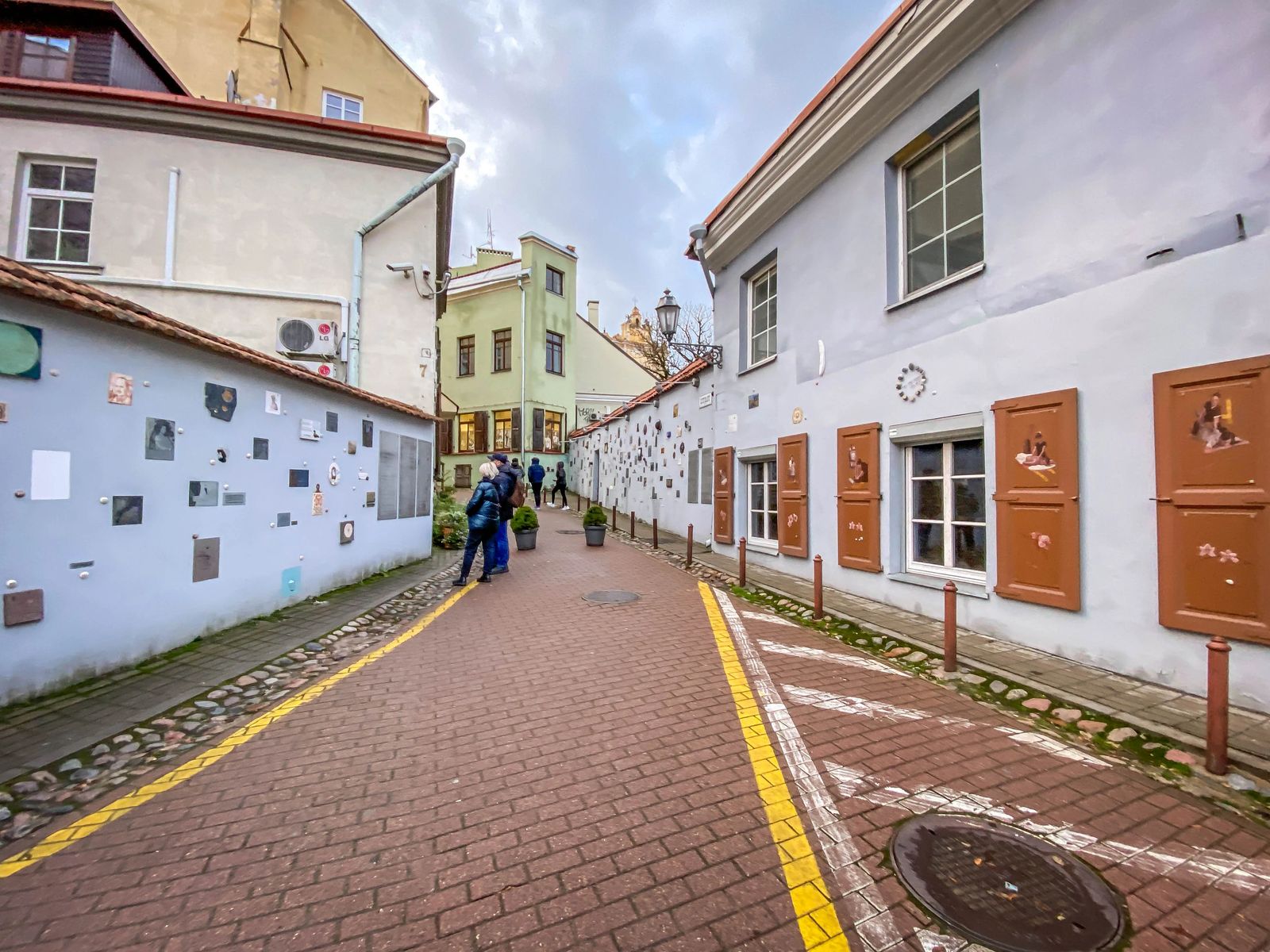
As you walk around Užupis, you will see local artisanal shops - a PERFECT place to pick up some souvenirs. They have boutique hotels, shops and really seems to be a trendy place to both stay, shop, and play.
They also have Literary Street with everything from dentures drilled into a wall to pressure gauges. Each item has corresponding numbers to names of individuals who contributed to the literary history of Lithuania.
Don't forget to catch the Užupis Water Nymph right under the bridge entering the city. She is said to capture souls and entrap them in Užupis if they do not like her. There is also an adorable swing that you can go and dip your feet in the water in the hot summer months and take an enviable Instagram photo.

16- Church of St Casimir
Prince Casimir lived during the 14th century and is one of the patron saints of Lithuania. He was made a saint after an artist was attempting to paint a arm in a painting on Prince Casimir holding a Lilly and after multiple attempts at covering up a misplaced arm the next morning the arm would reappear. The painting is said to be a miracle of Casimir. He is now known as the three handed saint and the three handed painting remains in the Vilnius Cathedral.
He also had an entire church built in his honor in the 16th century. It is one of the earliest examples of Baroque architecture. If it looks similar to the churches in Poland, it is, the architecture was purposefully. modeled after the churches in Krakow and Lublin.
The church closed before I could get a chance to go inside but be sure to check out the paintings by Antanas Kmieliauskas: The Resurrection of Christ, St Casimir, St Andrew Bobola and St Ignacas Loyola.
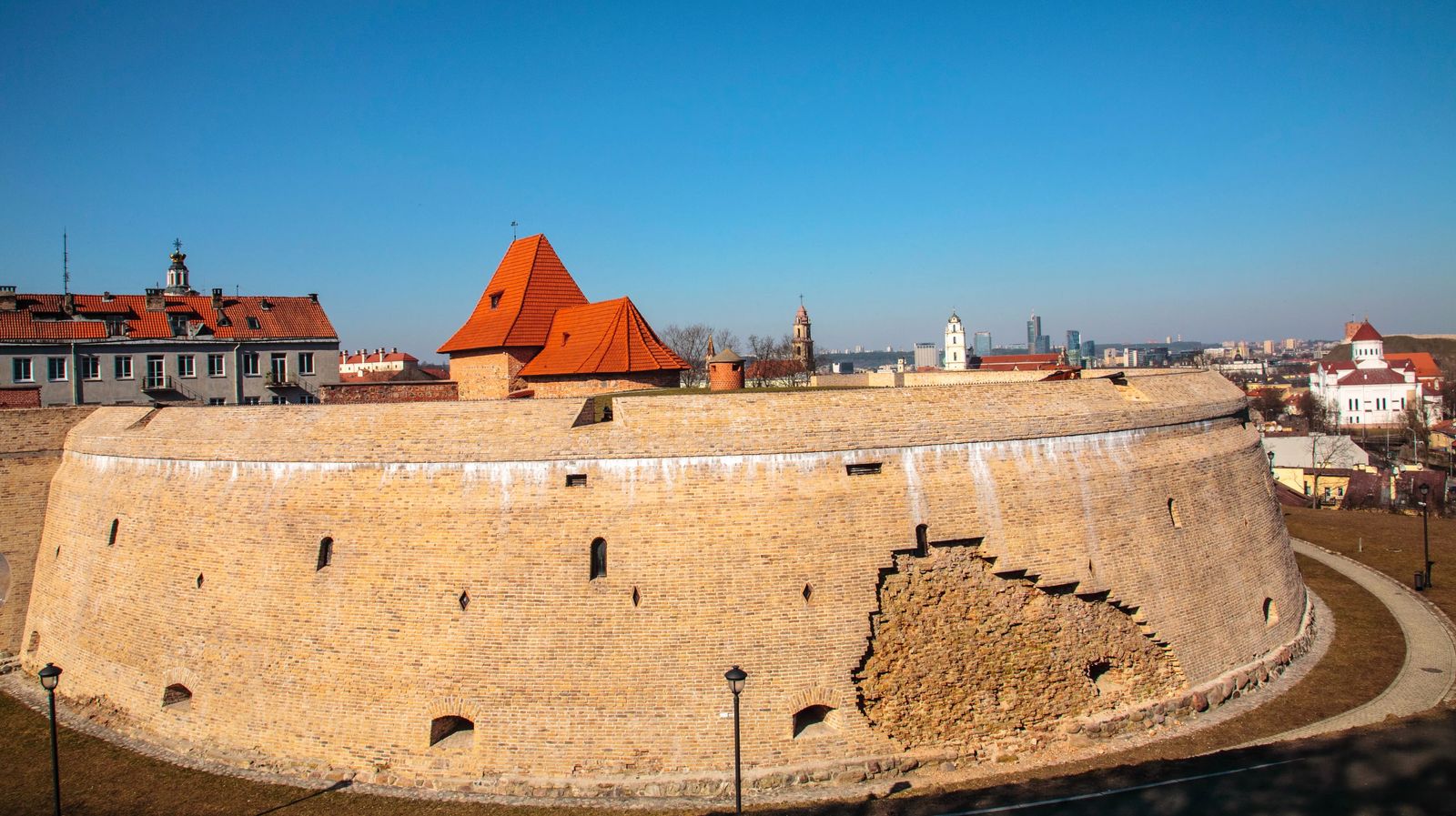
17- Vilnius Bastion
While the Bastion wasn't ideal to walk along during the end of November when I was there, it was quite a mammoth structure to see. You can walk along these 16th century defensive walls that once protected the eastern side of the city. It is currently a military museum that contains the first European textbook about artillery and different historical facts about the Grand Duchy of Lithuania and his strategic defensive practices.
There are different legends associated with the Bastion including a cursed maiden hidden here, a Basilisk that lived in a cave under the castle (sounds like Harry Potter doesn't it). These defensive walls had 10 different gates and the entire system formed a circle.
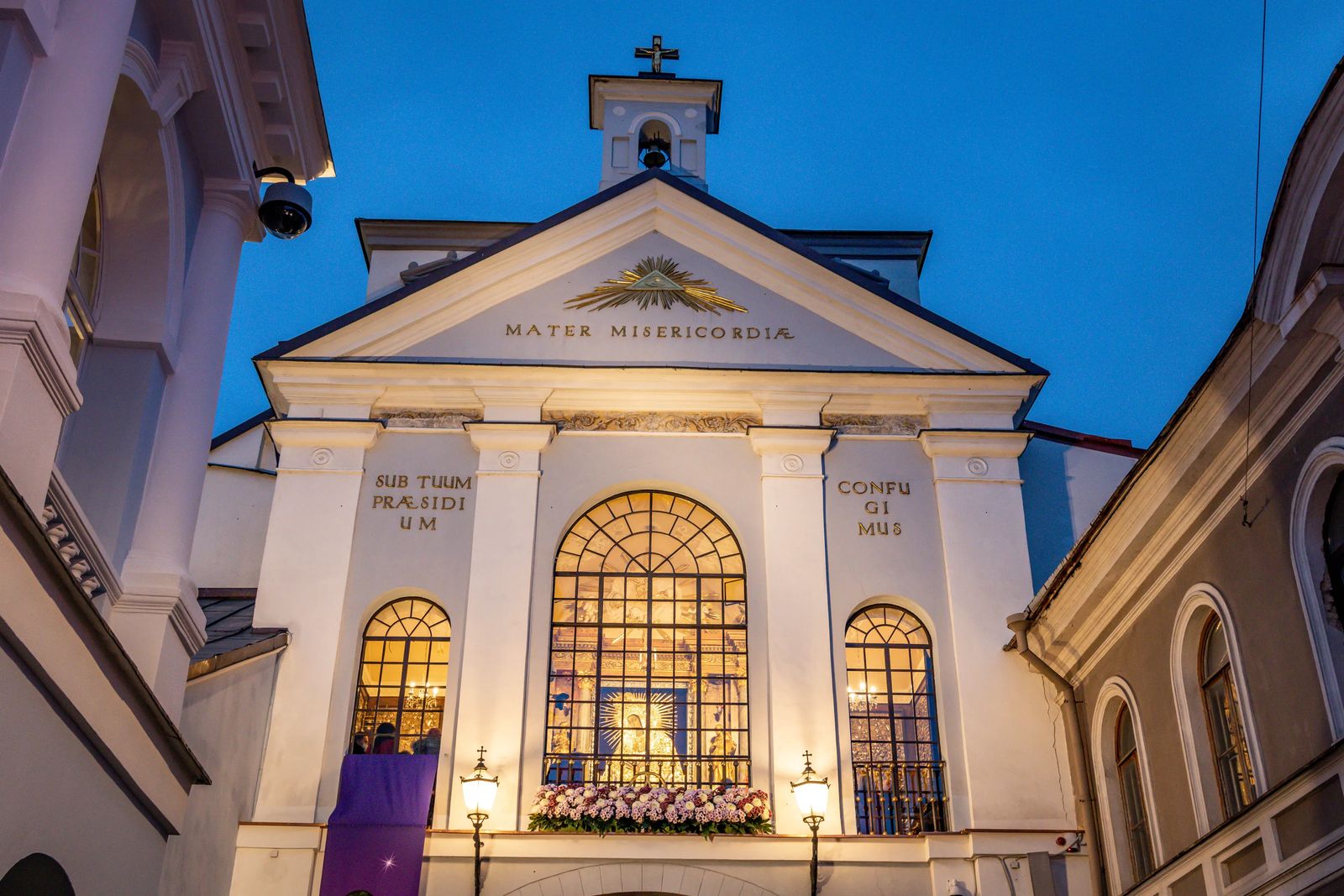
18 - Gate of Dawn
Speaking of Gates of the defensive walls, this is the Gate of Dawn. It is unique in that it also is a Chapel that holds a miraculous golden relief of the Virgin Mary. The Legend has it, that during World War II there was a German soldier who was shooting at a soldier hiding up in the chapel. The bullet that was shot hit her left shoulder and did not pierce the relief.
The metal silver hearts found in the chapel are also said to have miraculous healing properties. It is considered so holy that parishioners climb the stairs on their knees to enter into the chapel. There are televisions outside to see into the chapel if there is not enough room inside to say a prayer. In fact, while there, there were at least two dozen people that while they were walking would turn around, make the cross symbol, and say a quick prayer before moving on.
This is what I love about traveling, seeing practices, cultural norms like this that are so foreign to me. It helps me expand my views of the world, religions, and takes me to a higher vibrational frequency. Well, at least I like to think so.

19- Best City Overlooks Of Vilnius
There are SEVERAL overlooks of the city with incredible panoramic views of this medieval city. The first is the Hill of Three Crosses where you can see Gediminas Tower and Cathedral Square. Subaciaus gatve street gives you a slightly lower overlook of the city of Užupis. Gediminas Castle lets you see the layout of the city (see my video above) with views of the Palace of the Grand Dukes, old town and the Neris River.

20- Church of St. Peter and Paul
This Roman Catholic Cathedral is little ways outside the city, but well worth the effort to see. It is a former monastery with STUNNING ceilings of 2,000 Baroque stucco figures by Giovanni Pietro Petri. It is considered a masterpiece of Lithuania and was initially built as a celebration of kicking out the Muscovites (Russians) after six years of them occupying this area.
There are some arguments of what came first the 14th century wooden church or the monastery from the 16th century. Russia burned it down in 1655, and then it was rebuilt in 1662.
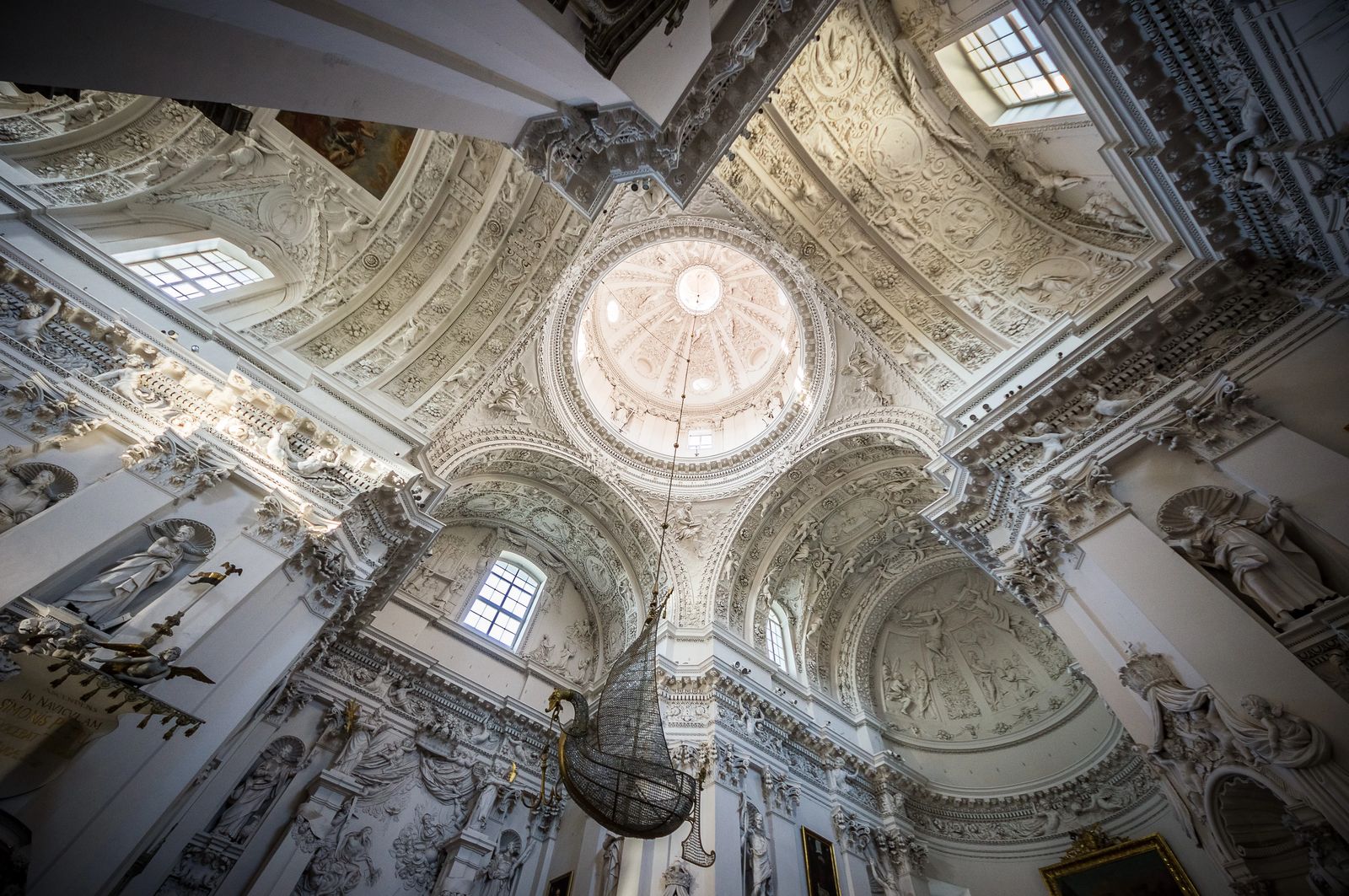
It was Michai Kazimierz Pac that decided to rebuild the church after it was destroyed, hoping that it would become a mausoleum for the Pac family. Pac was buried beneath the doorstep of the main entrance, then lightning hit the church, knocked a statue over which cracked the tombstone. It is rumored this was divine intervention for Pac's sins. So as you enter, make sure you look to the walls near the entrance to see this cracked tombstone.
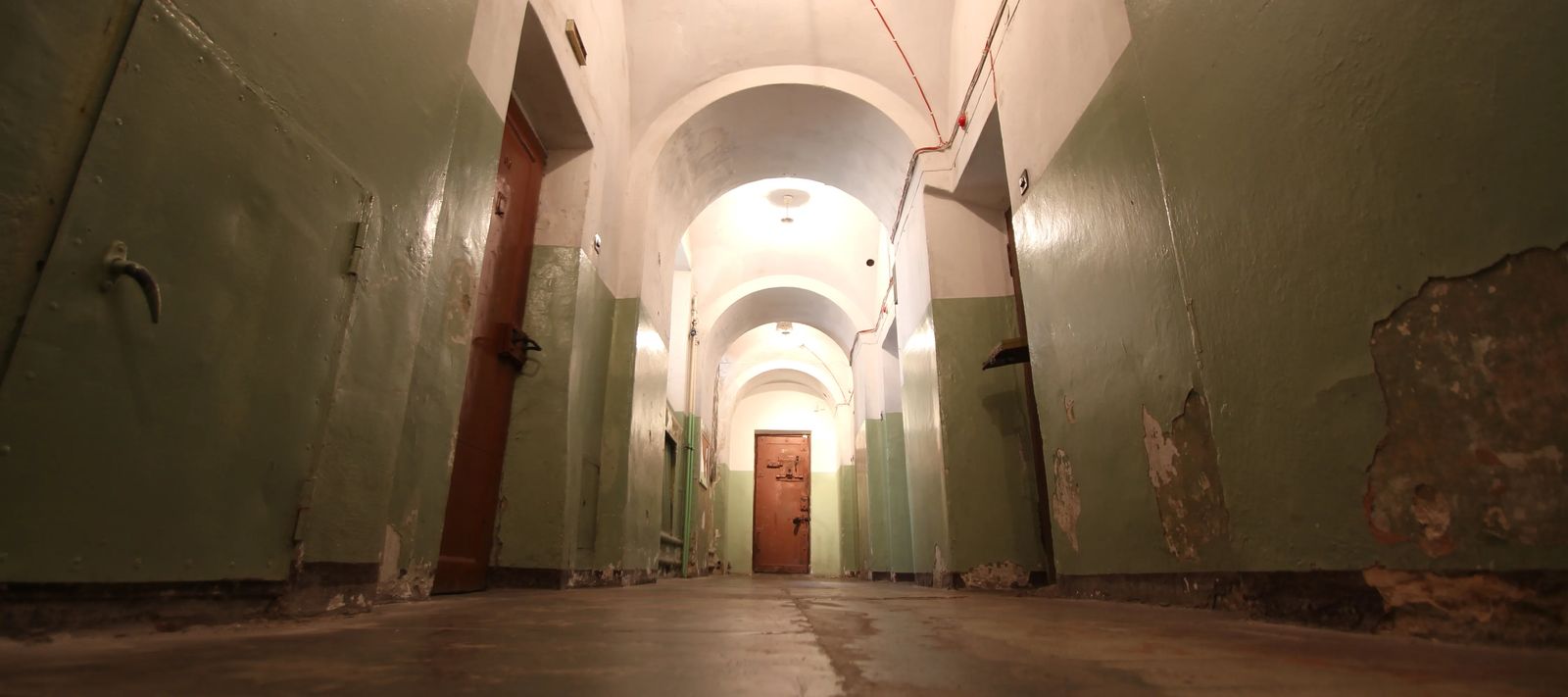
21- Museum of Occupations and Freedom Fighters (formerly KGB Museum)
To be honest, I wasn't in the right headspace to be able to visit the Museum of Occupations and Freedom Fighters. I do think it is incredibly important to face the atrocities of the past to help us better understand how to prevent them in the future. The museum is real, raw, and can be quite disturbing so make sure if you are more of the sensitive type, like me, that you prepare yourself mentally for this.
The Museum was established in 1992, and then transferred to the Genocide and Resistance Research Centre of Lithuania. Many people who visit Lithuania refer to this as the KGB Museum, however I do think it is incredibly important to pay homage to those who fought for the freedom that Lithuania knows today.
For 50 years Lithuania was oppressed and occupied by the Soviet Union. There were deportations, arrests, and secret executions. These rooms show how they would hide deaths, silence the guns going off and dispose of the bodies. Many would enter these doors but never emerge. It isn't that long ago that Lithuania was officially liberated.

Our guide who drove us from Vilnius to Latvia told us that her Father was one of the people who died at the TV tower. It was January 13th 1991 a Russian Army circled the TV Tower and radio station and drove straight through the unarmed crowd. Of the thousands of people who tried to protect their communication systems, 14 people lost their lives and 1,000 people were injured. Read the whole story here.....it is quite chilling so prepare yourself. Keep in mind, Lithuania allegedly had their independence from Russia in March of 1990.
The Lithuanian theme repeated over and over during this time was, "It is our unity, calm and dignity that are the only weapons we can and will always be able to use against the brutal force of the occupants".
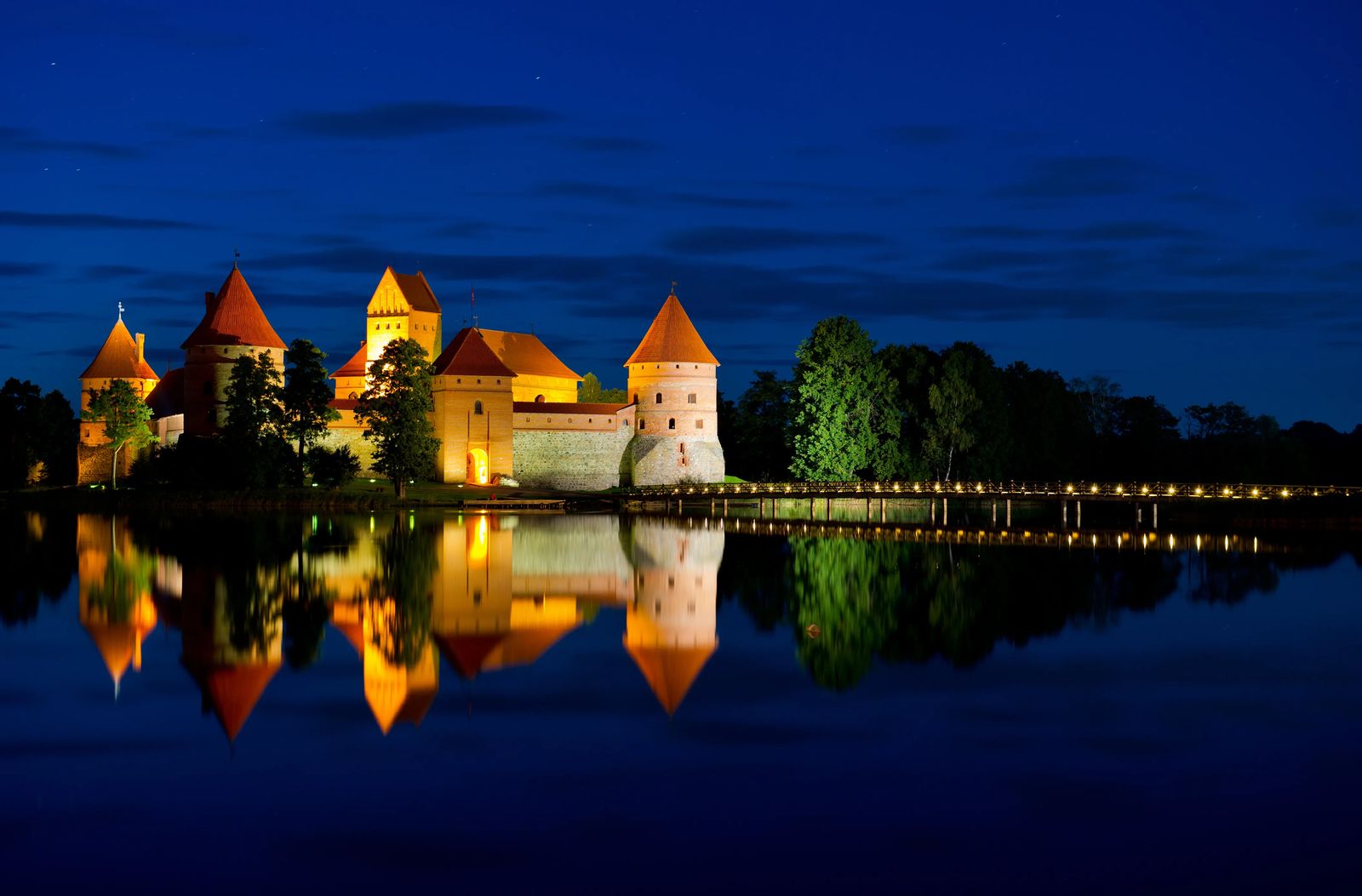
22- Trakai Castle
This is a castle in the middle of the lake that is where Lithuania started. It is 17 miles west of Vilnius and is easily reached by bus, I use Rome2Rio.com to find my way to the more off the beaten path places like this. This is terrific place to visit any time of year and gives major Game of Throne vibes as you can walk the ramparts.
This was built in the 14th century by Kestutis, and was the main hub for the Grand Duchy of Lithuania. So the short history of this place is Kestutis moved in, the Teutonic Knights (Christian vigilantes basically) came and assassinated him. Jogaila and Vytautas the Great fought for power and the decided to make it a draw.

The castle was made into living quarters, chapel, defensive structure and expanded in the 15th century. The walls were thickened, and a prison added, along with large towers to house soldiers and cannons. Over the years it fell into disrepair and was repaired in the 19th century.
When you go inside you will learn all about Grand Duke Vytautas. He was a multilingual ruler who spoke German, Italian, Russian, and Tata. At the time that he ruled Lithuania expanded from the Baltic Sea to the Black Sea.
There are interactive exhibits, a large throne hall with gothic vaults and arched windows. Items on display that date back to the earliest times of the tower. There is a coin collection that spans several centuries, and many items in the vault that belonged to members of the Teutonic Knights.

23- Kernave
If you have more time to explore in Lithuania, I highly suggest heading out to the Troy of Lithuania called Karnave. These mounds date back to the 10th century BC all the way to the middle ages. The mounds themselves were created to protect different fortifications, five castles to be specific.
They have reconstructed a medieval settlement here with scattered huts to show you what it might have looked like in the middle ages. With that there is an incredible archeological museum filled with items found at these sites that date from the Iron Age to the Middle Ages.
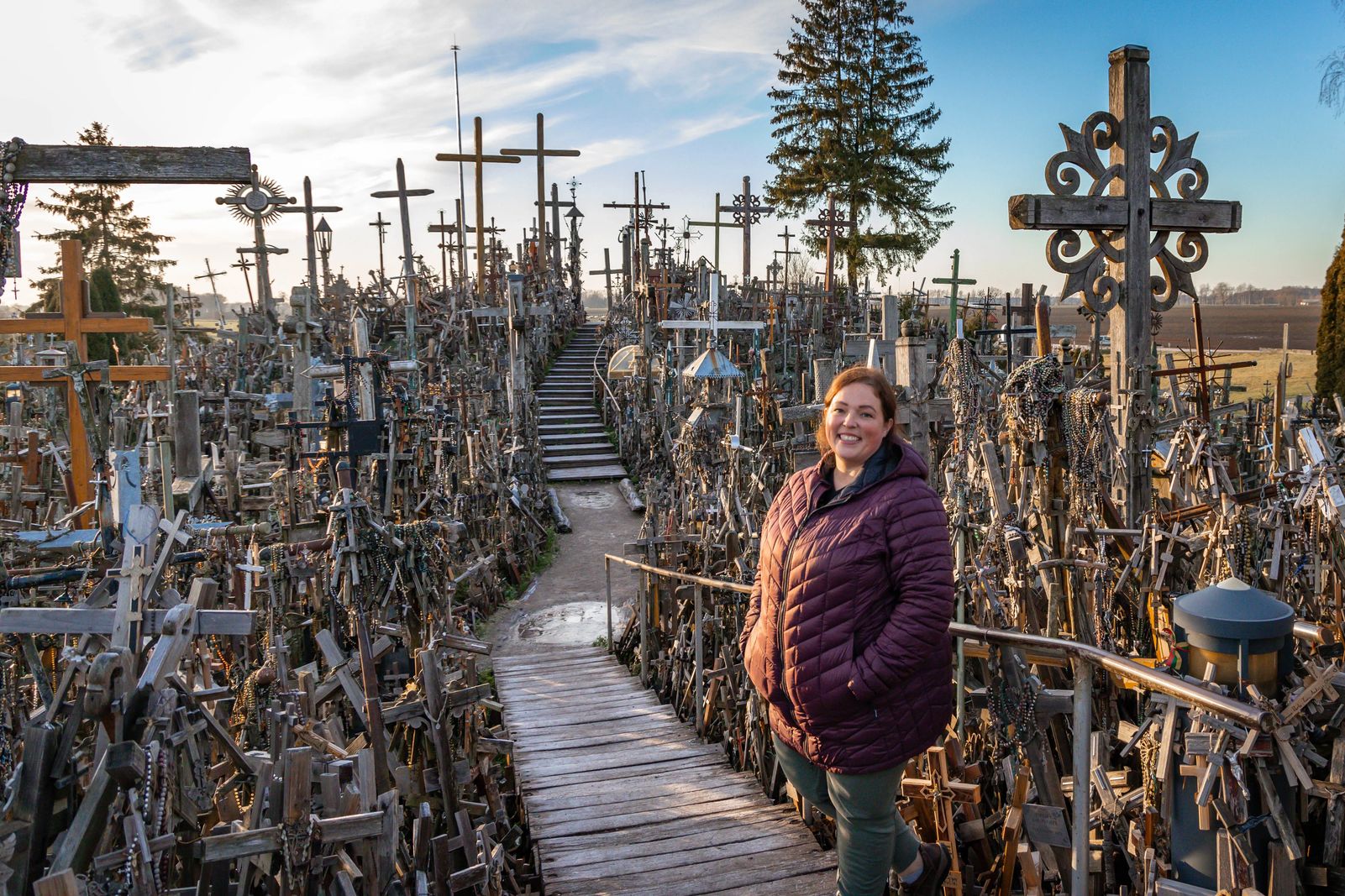
23- Hill of Crosses
For nearly two centuries this area has been a place of metal and wooden crosses to be placed in honor of loved ones who have passed on. When you drive up, it doesn't appear as a giant hill until you start exploring the area and there is a large drop off on the back side of the site. It doesn't make it any less impressive though, as well as slightly eerie and sad.
The first mention of this area was in 1850, crosses were left by relatives of those who died against the Russian regime. No matter how many times the Russians came to level the and bury the crosses (rumored to be five times), the crosses kept being put here.
There is a legend that the Virgin Mary appeared here holding the baby Jesus and asked the locals to cover this place with crosses. It is because of the hand carved crosses from so many different sects of religious believers that have been placed here that it is recognized as a UNESCO heritage site.
It was moving to think that so many people have come here to remember and celebrate the lives of those who have touched them. Our guide did say though, it is not a place you want to be visiting at night. You can buy your own cross to leave here, but you will need cash because of how remote it is.
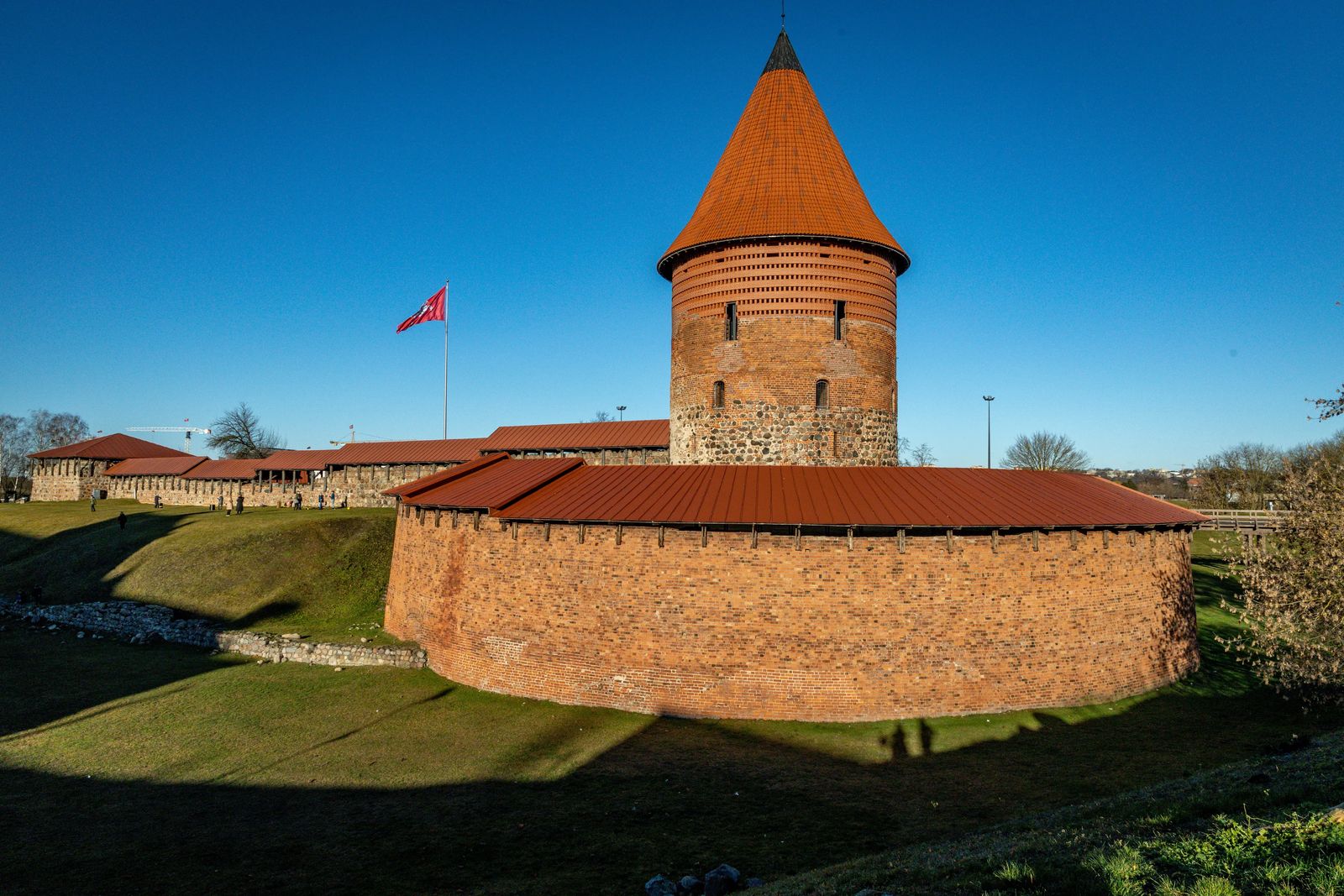
24- Kaunas - UNESCO City of Design
This is the second largest city in Lithuania after Vilnius and was the capital of Lithuania for a time from 1920 to 1939. It is a quaint town with gorgeous city center that is easily walkable. It was during the time of Poland seizing Vilnius during 1920 that many Art Deco and Lithuanian National Romanticism architecture-style buildings, furniture, and interior design time created a cafe type culture here.
The European Art Deco here has received the European Heritage Label, and is a major reason why Kaunus was the very first city in Eastern Europe to be designated a UNESCO City of Design. If you are into architecture, city planning, and quaint city centers bursting with history - do not miss Kaunas.
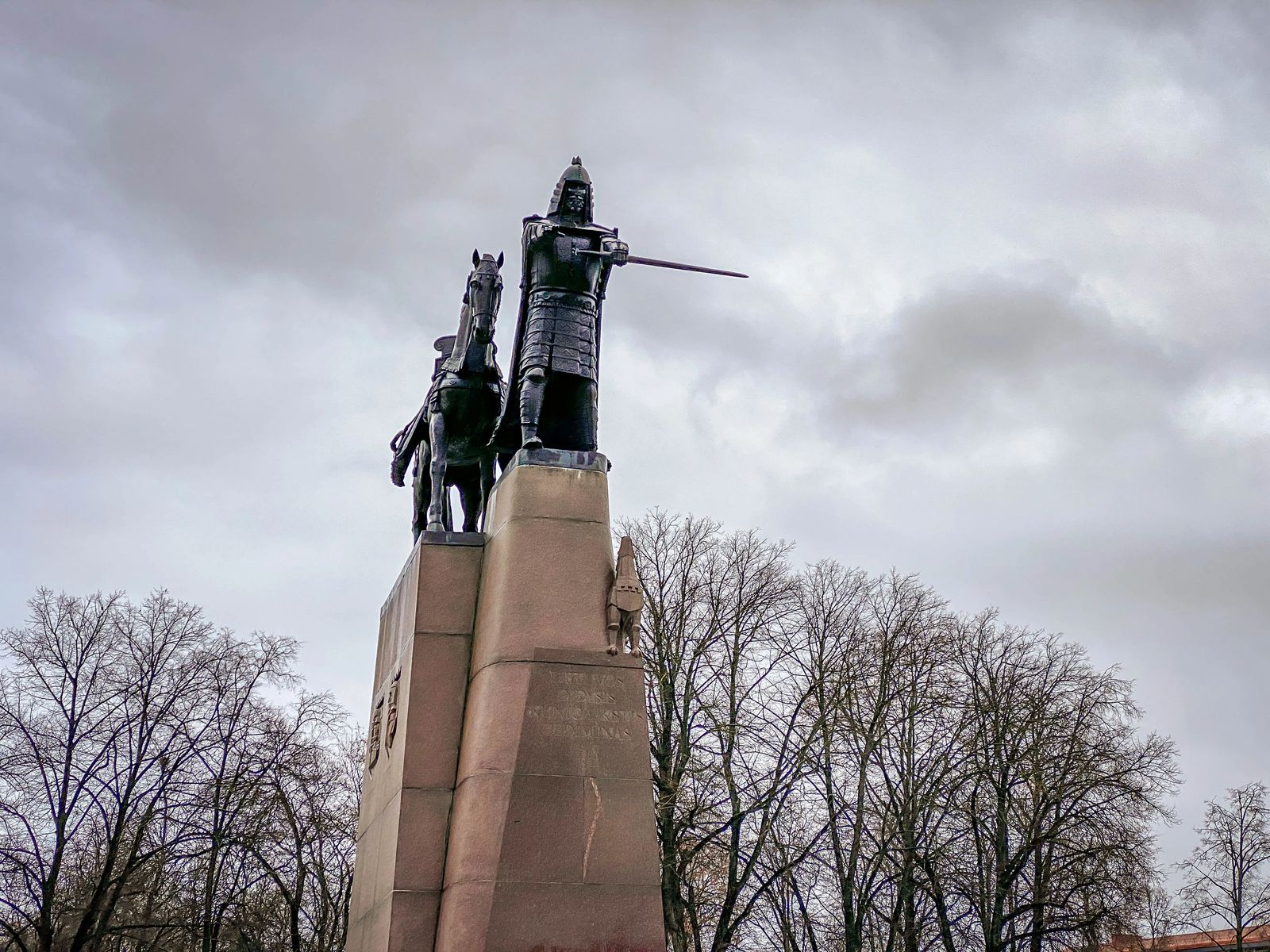
25- Other Winter Activities and winter Festivals in Vilnius
There is a lot to do besides just hitting the tourist hot spots, so if you decide to stay here are a few more activities you can enjoy in Vilnius in the Winter.
- Go snowboarding and skiing at the Liepkanis hill
- Go to a Lithuanian Traditional Bath House - (MOVE OVER FINLAND SAUNAS)
- Go Rock Climbing at Montis Magia School
- Visit Lukiškės Prison where concerts are now held!

Take Away From Visiting Vilnius Lithuania
The people of Vilnius and Lithuania are warm, resilient, and absolutely hilarious. I learned so much about the Soviet Occupation and the trials they faced just in the 1990's. As one of my guides said, the Lithuanian people are just so proud of gaining their independence that they will take pride in any little thing they can find to restore their identity from what it was under Russian rule.
I do think no matter what time of year you visit Lithuania, it is well worth the effort to do so. They know what long hard winters are like, and have plenty of shows, museums, and day trips from Vilnius to satisfy your adventurous side.
Let me know in the comments if you have any questions about this itinerary or about visiting Lithuania.
Where To Stay In Vilnius Lithuania
Google Map Of What To See In Lithuania
Like it? Pin it! Sharing is Caring ;)

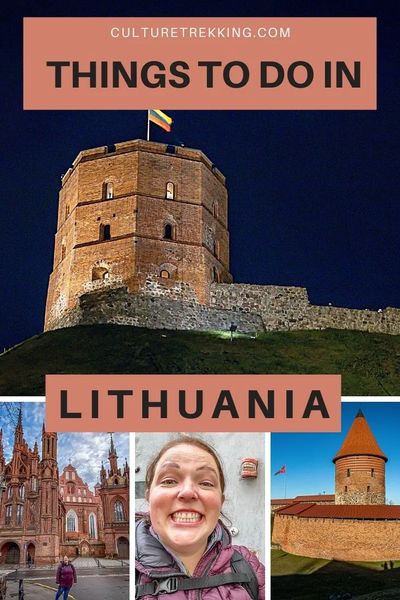.jpg?fit=outside&w=1600&h=2399)
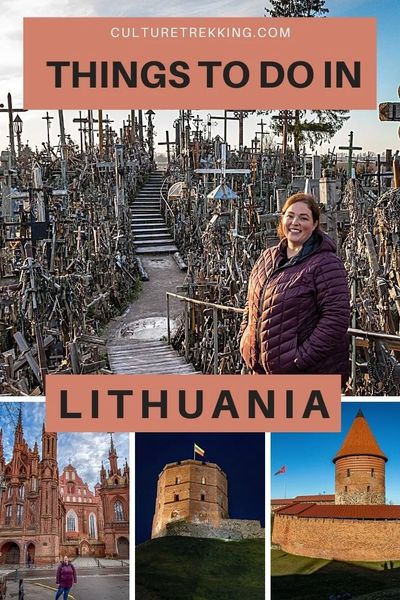.jpg?fit=outside&w=1600&h=2399)
.jpg?fit=outside&w=1600&h=2399)
.jpg?fit=outside&w=1600&h=2399)
Latest Articles On Culture Trekking


Welcome to Culture Trekking!
My name is Janiel, a leader in the travel industry with over 20+ years of experience with international travel. I specialize in solo female travel, cultural connections, sustainable adventures, food and history to help make your travel experiences fun, meaningful, and delicious. My experience in travel, and my personal story have allowed me to get published in Fodor's Travel, Atlas Obscura, Metro.co.uk, Trip Advisor, and multiple Podcast interviews. You can find me on pretty much every social media channel YouTube, Instagram, Twitter, Facebook, Pinterest, TikTok. To read more about me and my story click here. If you are a brand and would like to work with me, click here.














